Instruction
- Cats with medium and long hair didn’t make contact with hard or soft surfaces (their fluffiness acted as a barrier)
- Cats with short hair avoided hard surfaces too
- But those short-haired kitties did indeed leave lipstick marks on soft surfaces like bedding and furniture cushions
- Create video presentations explaining their own CER projects
- Use a shared online whiteboard to map out their claims, evidence, and reasoning
- Collaborate on data analysis using a cloud-based spreadsheet
- Design virtual reality simulations to test hypotheses without…painting cat buttholes
- Running record
- Fluency Rates
- Lexile levels
- Title and Author: Space for students to record the title and author of each book they read.
- Star Rating: A section where students can rate how much they enjoyed the book.
- Reading Charts: Visual aids such as charts with images of fiction subject stickers, multicultural stickers, and other relevant categories to help students organize their reading.
- Integration with Notebooks: Reading Records are often pasted into students' Reader/Writer Notebooks or Interactive Notebooks, which are used in both English Language Arts (ELA) and Social Studies classes.
- Special Collections: Some Reading Records include special collections of books, such as those focusing on multicultural characters or specific genres, to promote diverse reading options.
- Dual-Use for Multiple Subjects: In some cases, Reading Records are designed to be used across different subjects, allowing students to enter the same books for both ELA and Social Studies classes.
- Provide all necessary security protections/information (Amira doesn’t retain information after analysis)
- Identify early adopters and empower them
- Monitor usage and provide support
- Address technical issues immediately
- Don’t add-Replace
- Provide feedback to Amira
- Be willing to go into the classroom
- Time management
- Catching Up with Old Friends and Acquaintances. I ran into Michelle Cooper, the EdTech Nerds (who published their first book)
- Coaching for Results: Strategies That Work. Discover how various coaching models can enhance classroom learning and seamlessly integrate technology into your teaching strategies! (M,8:30-9:50)
- Creating Classroom eBooks. Get your students more engaged with your content by having them become authors. Learn how to use tools like Book Creator, Canva, and Google Workspace to create digital ebooks. Join us for tips, tricks, and the how-to’s of creating eBooks with Google Workspace for Education.(M,1-1:50)
- Birds of a Feather for Special Education Educators. This was a small, but mighty group of special education (and dyslexia) educators/specialists.
- Search Capabilities: Perplexity AI can search the web in real-time and provide concise answers, making it easier to find information without sifting through multiple links.
- Language Models: It uses multiple large language models (LLMs) like GPT-4, Claude, and Gemini to understand and respond to queries.
- Multimodal Capabilities: Perplexity AI can handle text, images, and documents, making it versatile for various types of queries.
- Pro Search: This feature allows for more detailed and personalized searches, asking follow-up questions to refine the results.
- Collections and Threads: Users can organize their searches into collections and threads, making it easier to manage and revisit information.
Access the Free #TCEA Coaching Cycle #edtech #coaching #tceajmg
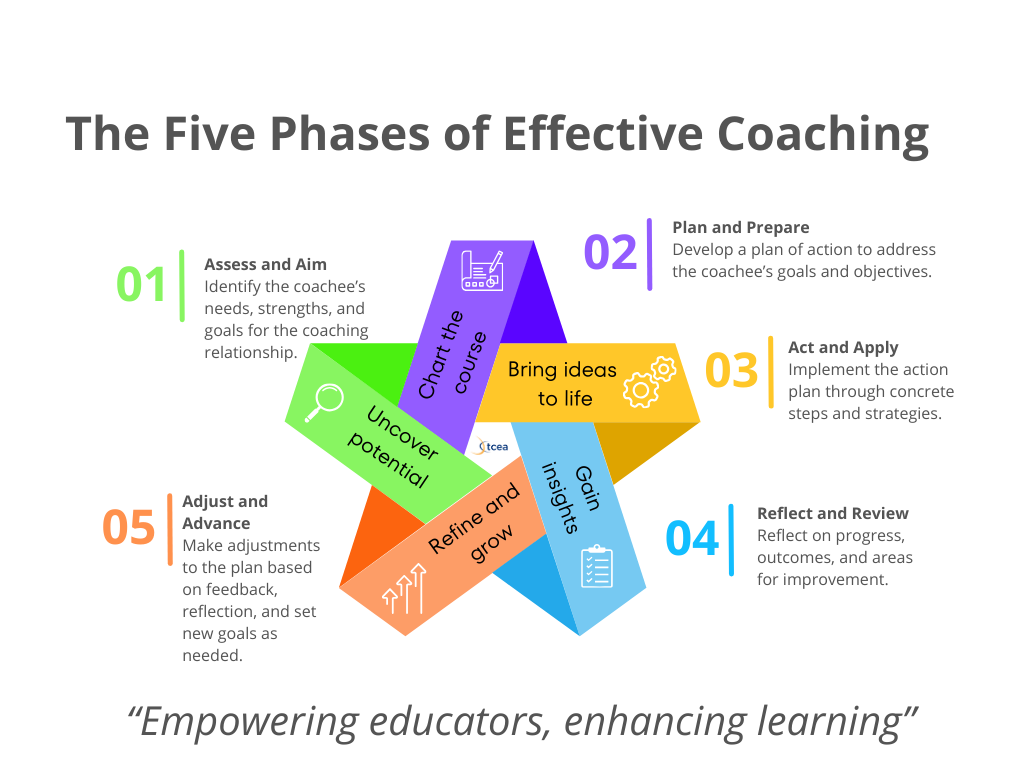
Explore this free coaching cycle for use in your school or district as you work to improve student learning and achievement.
Read more
Get Certified Today as a TCEA Instructional Coach
Five Ways Educators Can Leverage Virtual Author Talks to Boost Literacy This School Year #tcea #teaching
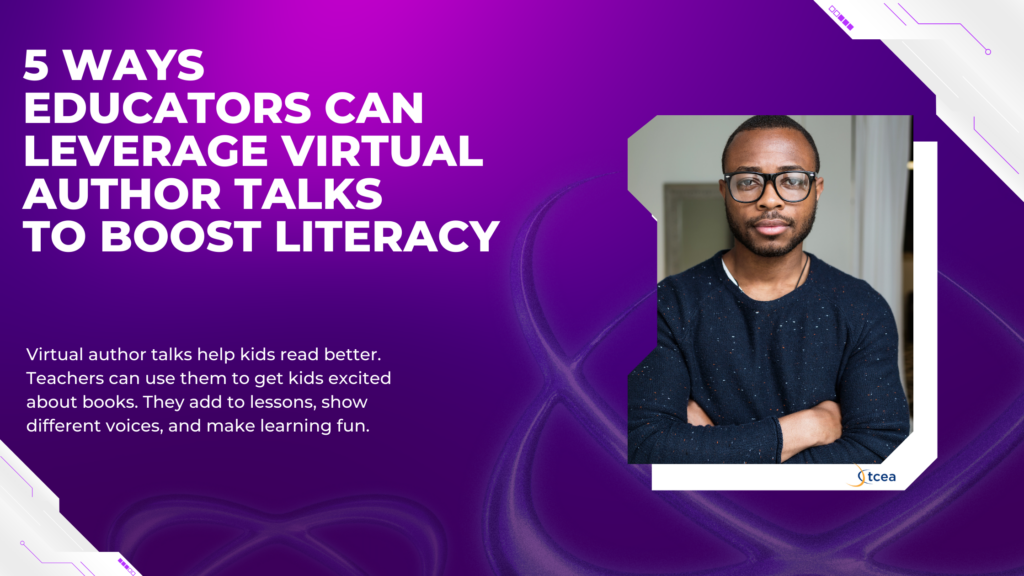
Virtual author talks help kids read better. Teachers can use them to get kids excited about books. They make learning fun.
Read more
Chain-of-Thought prompting with George Polya #CAPE #Math #Education #edtech #tcea #tceajmg
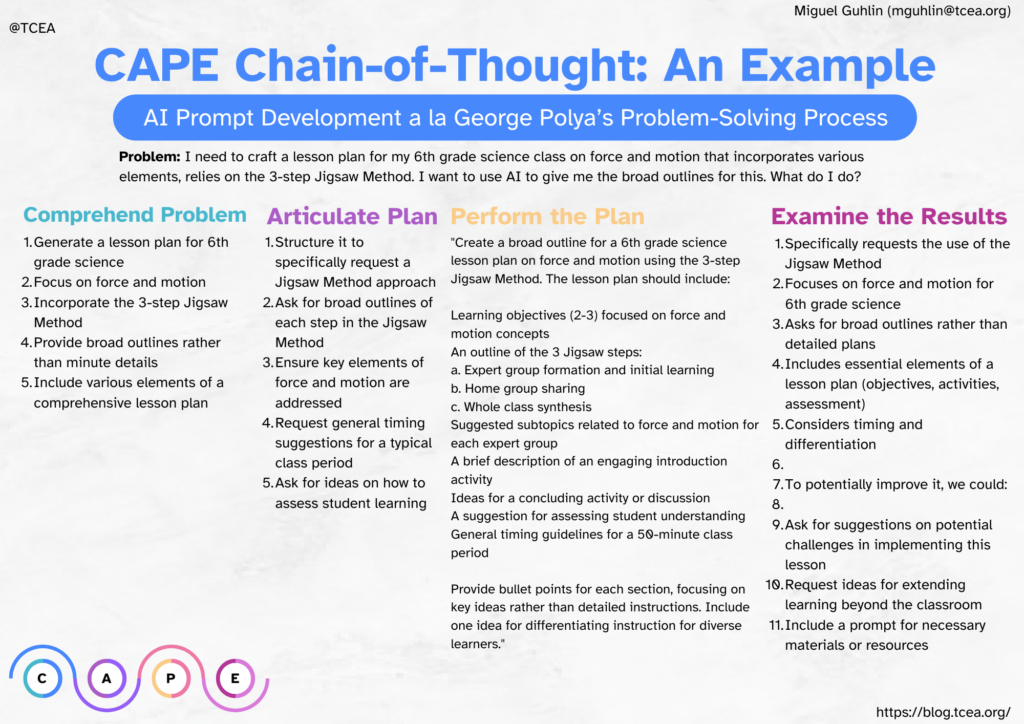
Chain-of-Thought prompting is a versatile and effective technique for K-12 educators. It can enhance students’ reasoning, problem-solving, and critical thinking skills. What’s more, it models AI prompt creation through decomposition. That is a future ready skill. You can drop the CAPE process into a ChatGPT Custom GPT or Claude Project to automate future lesson creation.
Read more
Seven Ready-to-Use Story Bin STEM Activities #education #edtech #tceajmg
“Have you heard of STEM Bins?” Peggy Reimers said. “No, I haven’t,” I replied. In a moment, I’d fallen off the plank, submerged into a sea of learning. Like treasure chests filled with tools for creative imagineering, STEM Bins are fun. I like to think of them as Story Bins, because they turn stories into powerful learning opportunities. Let’s explore several practical ideas for elementary Story Bins.
Read more | Register for Online Courses
Free Equatio Alternatives: Top Editors for #Math #Teachers #TCEA
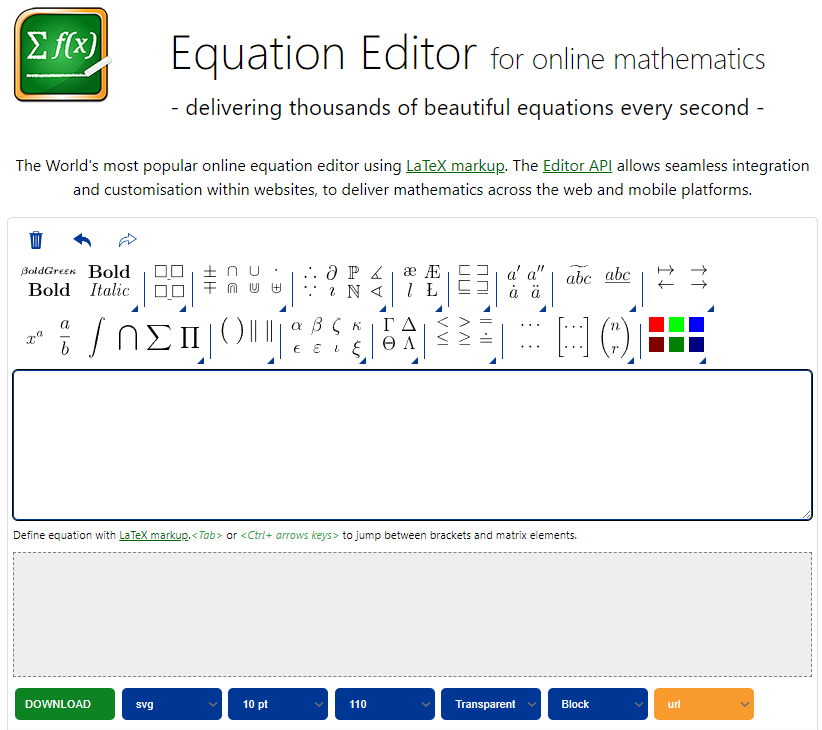
Explore five free alternatives to Equatio, the popular equation editor. As Equatio’s free version ends, discover tools to create math content. Now that the free version of Equatio for educators is going away, what options for equation editors do you plan on using? My math teachers absolutely loved Equatio. I’m looking for some options that will make them equally happy. 🙂 Thank in advance for your help. This blog entry addresses some free alternatives to Equatio.
Read more | Sign up for online courses
Make Flowcharts with Mermaid Code #AI #science #edtech #education #tcea
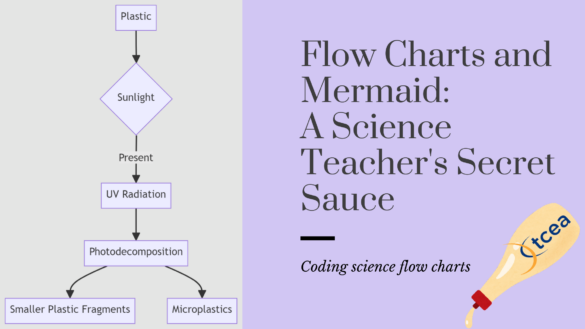
Combine flowcharts and coding to get students buzzing. Mermaid code is a powerful way to promote critical thinking skills.
Getting students buzzing about the steps of a scientific process isn’t easy; helping them think through concepts and process, even harder. Imagine if you could engage them with flowcharts and learn the same critical content. One way to get it done is to combine flowcharts and coding.
Read more | Learn more
The LEARNS Cycle #tcea #tceajmg #edtech #AI
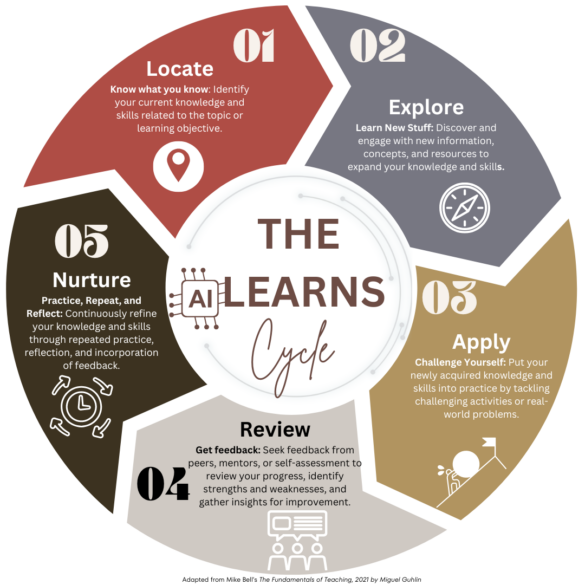
Meet the LEARNS Cycle, a simple way to situate AI tools in evidence-based instructional strategies and activities.
Read more
Bringing CER to Life with Hilarious (and Gross) Student Science Projects #tcea #edtech #tceajmg #science

Maybe we’ll all be investing in this accessory for our short-haired cats.
Note: This article was generated by AI from a Facebook post. Remember to laugh. That aside, it’s all true.
A Story for You (True)
Hey fellow science teachers! I’ve got a story for you that’s sure to grab your students' attention while perfectly illustrating the Claim, Evidence, Reasoning (CER) model baked into the new Texas science TEKS.
It involves an 11-year-old boy, some non-toxic lipstick, and a very important question: Does your cat’s butthole really touch all the surfaces in your home? Yes, you read that right. Let’s dive into the delightfully disgusting details.
The Claim
Our young scientist, Kaeden Griffin, made the claim that cat anuses make contact with various household surfaces, leaving…evidence…behind. A bold hypothesis to be sure!
The Evidence
To test his claim, Kaeden employed a simple yet brilliant method - he painted his cats' buttholes with non-toxic lipstick to see where colored…smudges…would appear around the house.
The results were enlightening:
As a colleague, the proud owner of a shorthair cat affectionately nicknamed “Skidmark,” said to me, “I can’t say I’m surprised by that last finding!”
The Reasoning
What can we learn from Kaeden’s admittedly crude but incredibly creative experiment?
First, it perfectly encapsulates the CER model. Kaeden made a claim, gathered evidence through hands-on investigation, and used that evidence to reason about the validity of his original hypothesis.
Second, it shows that science doesn’t have to be boring or overly serious. The best experiments often come from asking silly or unexpected questions - the kind kids excel at!
Finally, it highlights how education technology can enhance science instruction. You could easily have students:
The possibilities are endless when you combine core science practices like CER with powerful edtech tools.
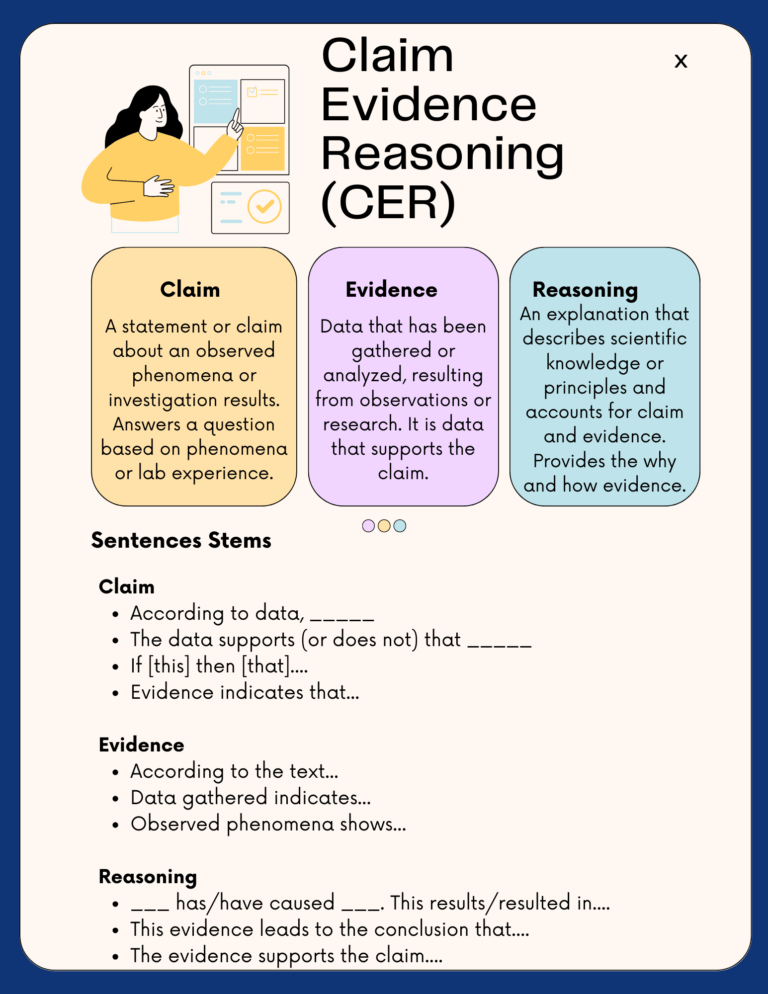
So let’s take a page from Kaeden’s book and get our students excited about hands-on science! Who knows, maybe their weird questions and wacky experiments will lead to the next big breakthrough.
As Kaeden’s mom said, “Science is the best tool we have to learn about the natural world (including cat butts)…And we definitely need more young people in science!!!”
Podcast #1: Matt Garcia, MakerMaven.net
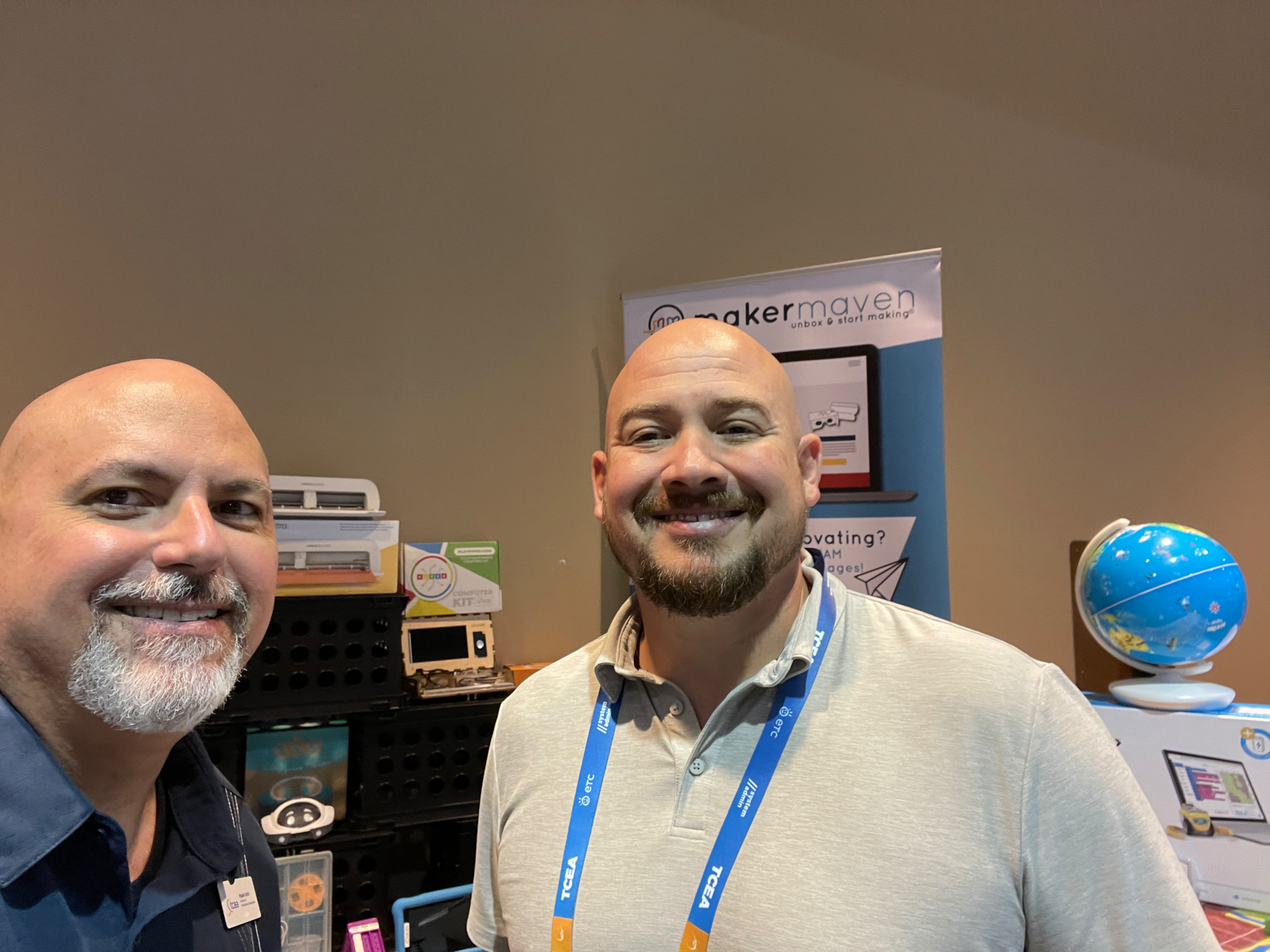
Listen to Matt Garcia, MakerMaven.net
At the TCEA Elementary Technology Conference, I had the chance to visit the Exhibit Hall and chat with Matt Garcia from MakerMaven.net. He shared a little about MakerMaven.net. The booth was full of exciting STEM friendly resources.
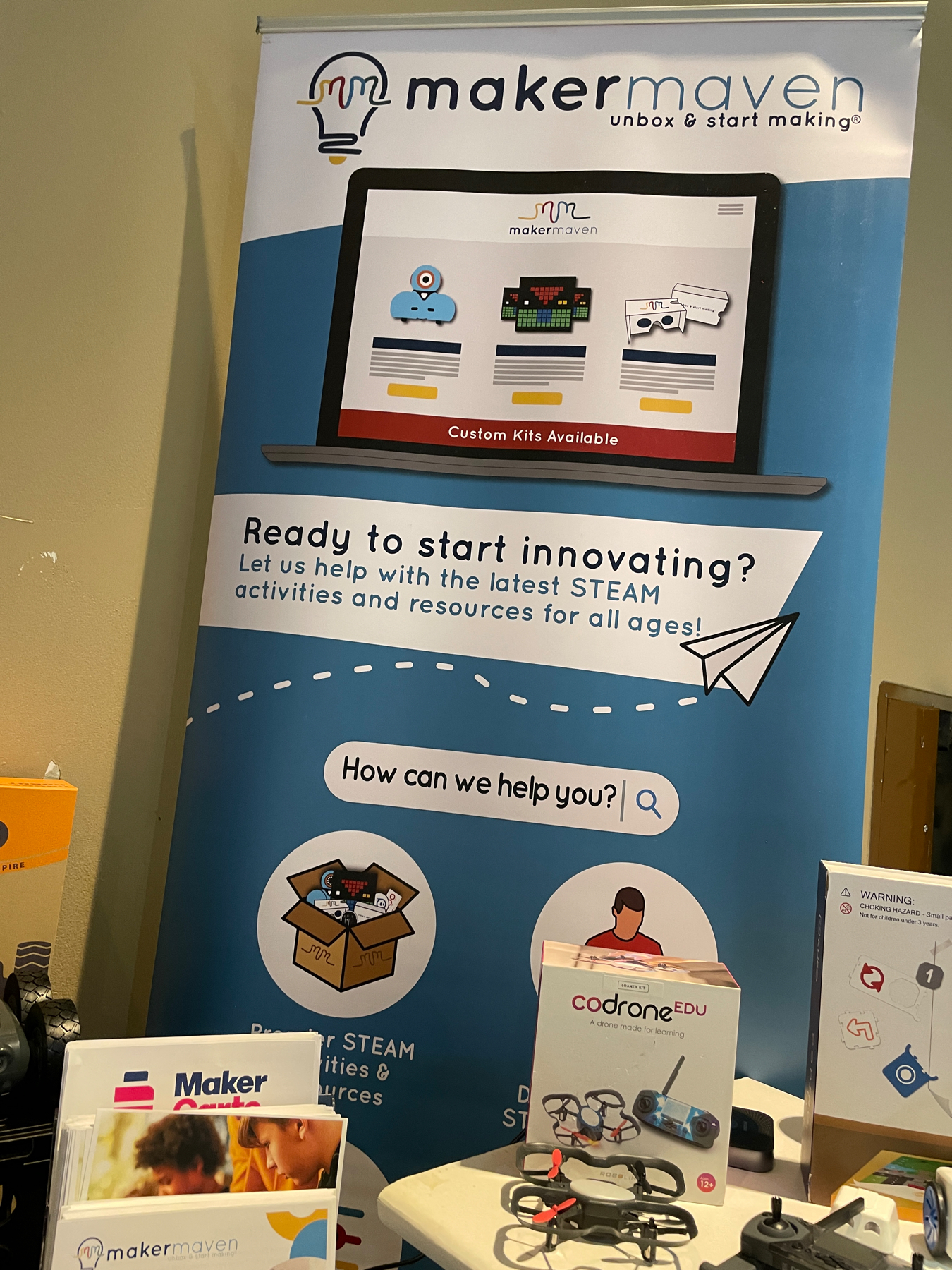
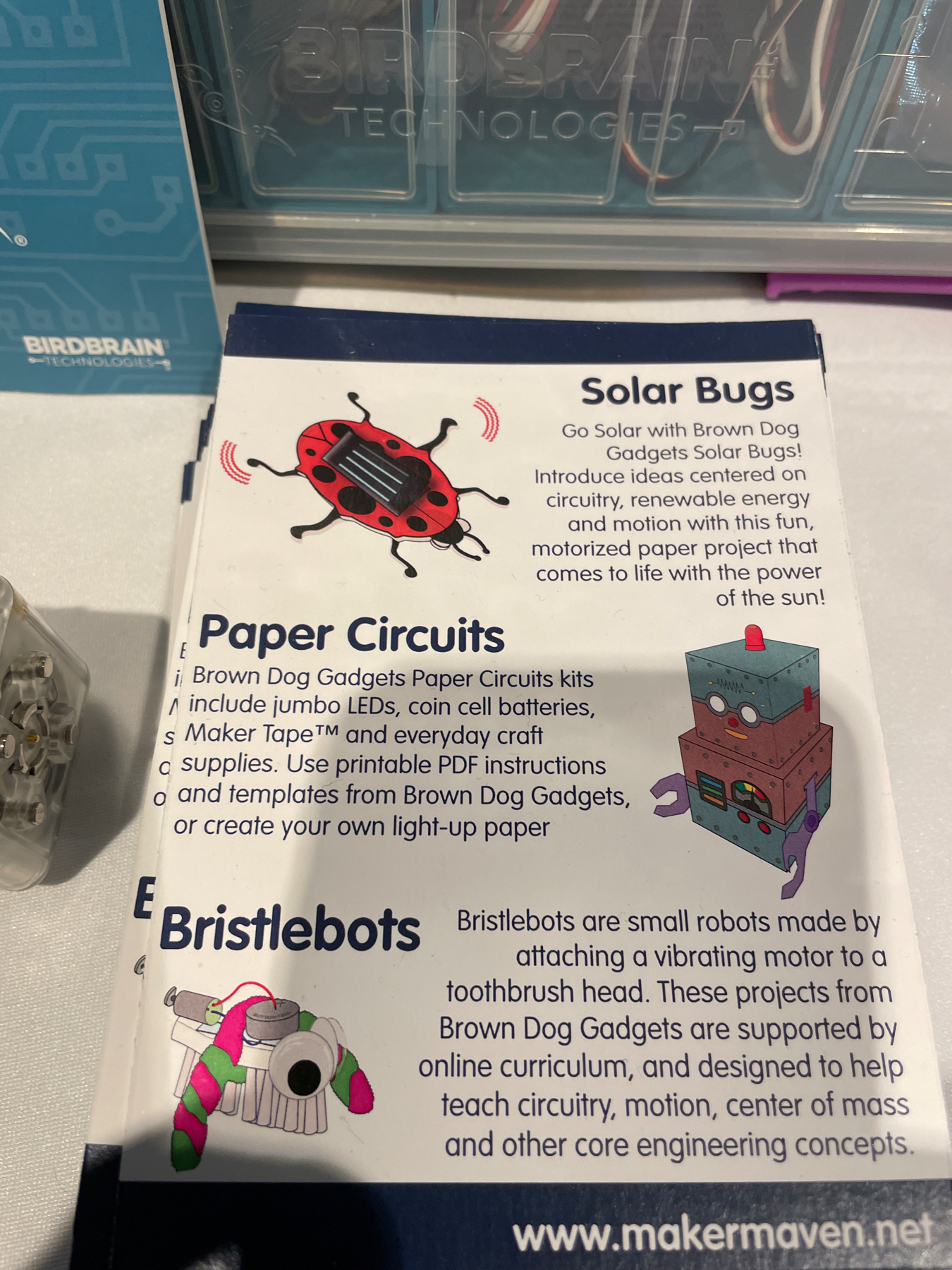
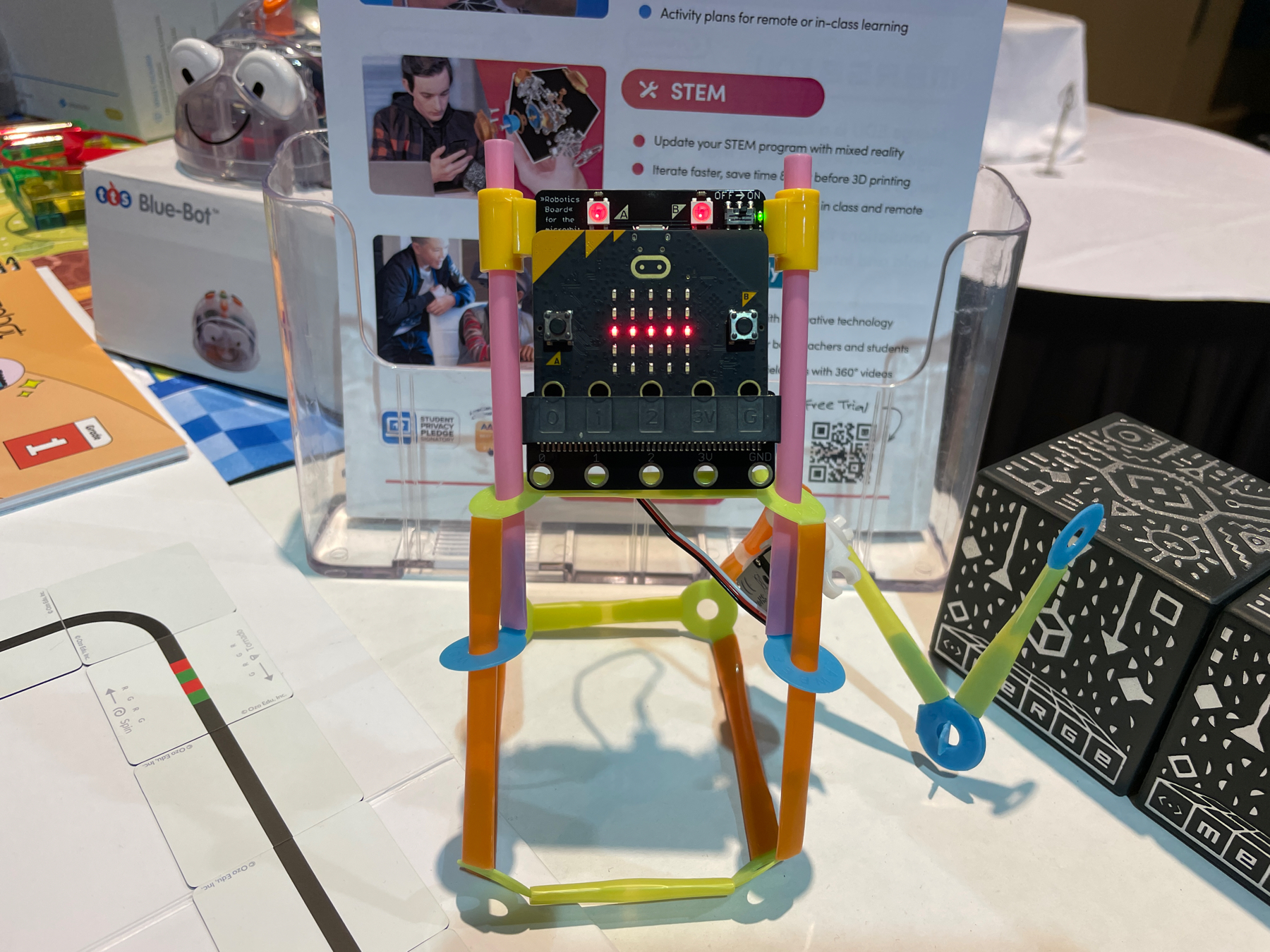

AI-Powered Reading Records

At TCEA’s ETC event, I had a chance to sit in on a presentation about Amira Reading Assistant. As I listened to the presenters, I realized it reminded me of Microsoft Reading Coach. The presenters in the District had heard about Amira in Spring, 2023. They wanted to use it to address reading gaps due to COVID-19.
Amira handles:
One benefit the presenters cited? “Teachers don’t have to train someone on how to manage a table or classroom of kids AND do running record. Amira handles that [reading record]”.
Defining Reading Record (AI-Provided definition)
In Texas classrooms, a “Reading Record” is a tool used to document and track students' reading activities and progress. It typically includes the following elements:
In the case of this district, teachers conduct reading records, using Amira Reading Assistant to record students reading it, then Amira does the analysis that teachers did.
View Presentation
Here’s the presentation from a K-12 School district in Texas - https://bit.ly/CISDAmira
Resistance
Some of the resistance they encountered in implementing Amira in their District, they “navigated” in this way:
Comparison Feature Chart
This Perplexity AI generated chart compares Amira Reading Assistant with Microsoft Reading Coach:
| Features | Amira Reading Assistant | Microsoft Reading Coach |
|---|---|---|
| Cost | $7.99/month or $72/year (25% savings) | Free with a Microsoft account |
| Personalized Tutoring | Yes, AI-powered, listens to students read aloud and provides real-time feedback | Yes, provides personalized practice based on mispronounced words |
| Reading Fluency Assessment | Automated oral reading fluency assessment | Integrated with Reading Progress for fluency assessment |
| Dyslexia Screening | Yes, includes dyslexia risk screening | No specific dyslexia screening mentioned |
| Micro-Interventions | 40+ micro-interventions aligned to Scarborough’s Reading Rope | Provides tools like text to speech, syllable breaking, and picture dictionaries |
| Languages Supported | English and Spanish | Over 100 languages |
| Device Compatibility | iPads and iPhones (iOS 13 or higher) | Web, Windows app, and integrated with Microsoft Teams and Immersive Reader |
| Progress Tracking | Detailed reports for teachers on student progress and skill mastery | Real-time data and insights into reading fluency through Education Insights |
| Content Sources | Stories from Highlights Magazine, Rebel Girls, Houghton Mifflin Harcourt, and more | Curated passages from ReadWorks and AI-generated stories |
| Engagement Features | Students can choose from several engaging texts, and receive badges and rewards | “Choose your own story” feature, badges, and unlockable characters and scenes |
| Professional Development for Educators | Guided implementation and year-round professional development | AI literacy courses and learning paths for educators |
Both Amira Reading Assistant and Microsoft Reading Coach offer robust features for improving reading fluency and comprehension, but they differ in cost, device compatibility, and specific functionalities. Amira requires a subscription, while Microsoft Reading Coach is free for users with a Microsoft account.
Citations:
[1] www.amiralearning.com/reading-g… [2] www.hmhco.com/programs/… [3] www.amiralearning.com [4] amiralearning.com/reading-g… [5] techcrunch.com/2024/01/1… [6] educationblog.microsoft.com/en-us/202… [7] www.microsoft.com/en-us/edu… [8] support.microsoft.com/en-us/top…
#TCEA #ETC Day 2 #EdTech #education #Galveston

What an exciting second day (Monday) to the TCEA Elementary Technology Conference. Today, my sessions focused around the following:
Catching Up with Old Acquaintances and Friends
What fun it was to run into folks at ETC. Most of my encounters happened in the hotel check-in line, where people were strung out for a mile, but I did run into a few presenters. For example, Michelle Cooper sat in on one of my sessions:
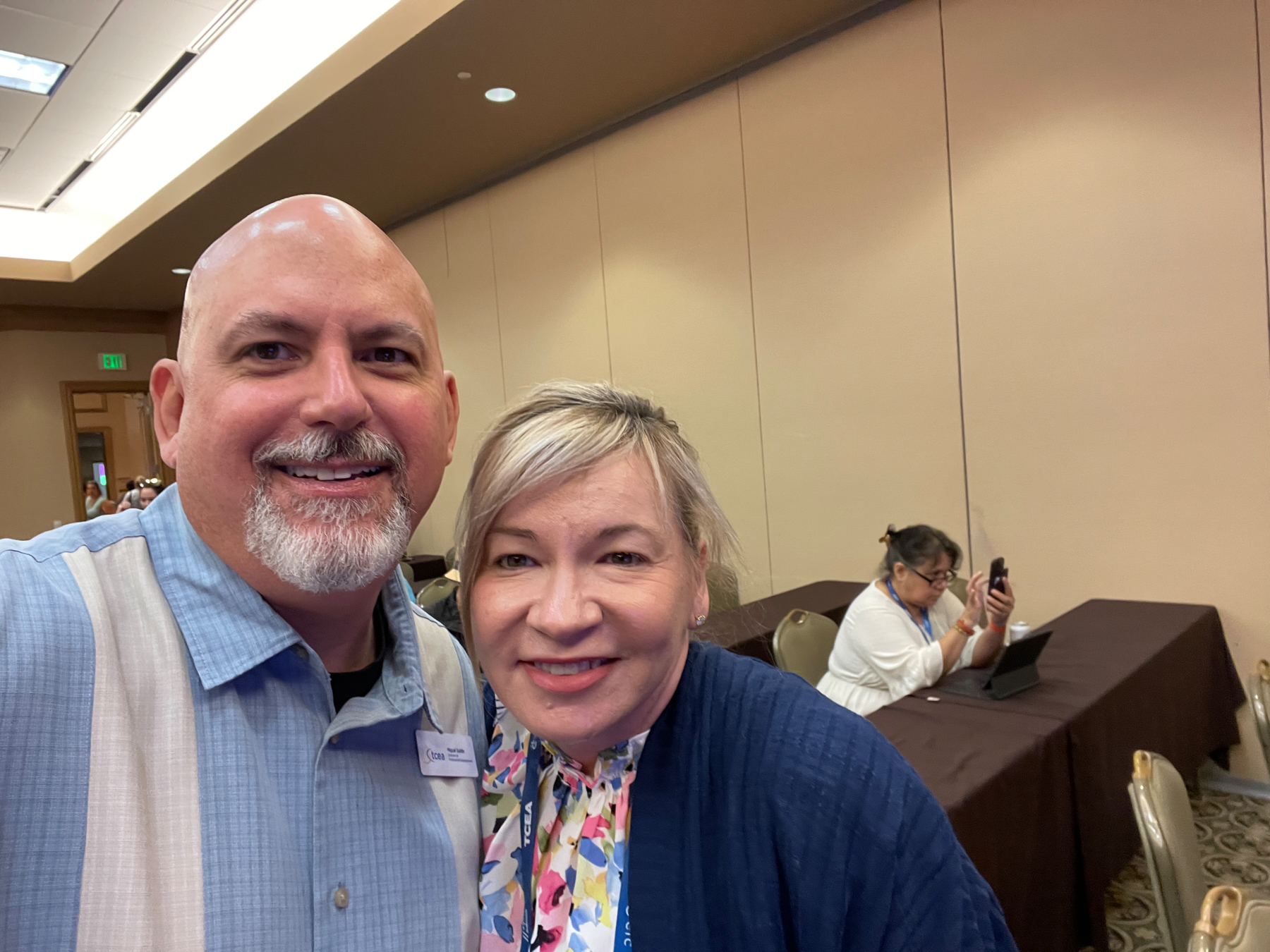
And, Kris and Destiny from EdTech Nerds were kind enough to let me acquire a first edition of their book (get it here), and they dedicated/signed it.
Here’s a close up with them holding their book in front of the famous ETC beach ball:
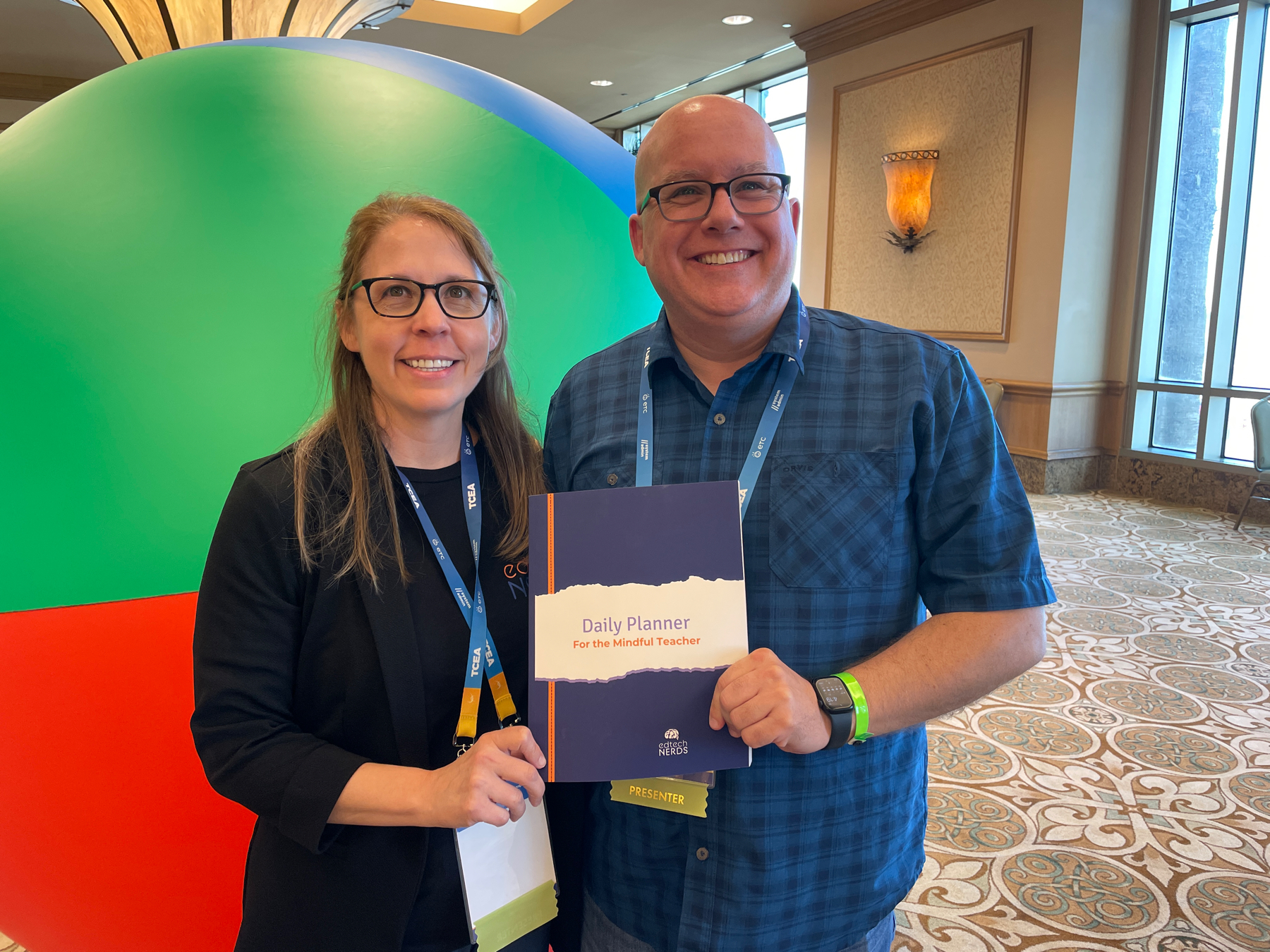
Coaching for Results
For this session, I was thrilled to use the Jigsaw Method to engage the audience in the exploration of various coaching models. I kicked off the session with an activity I borrowed from Peggy and Diana, a spin on a self-reflective capacity matrix with the nine elements of instructional coaching (see it in my slide deck).
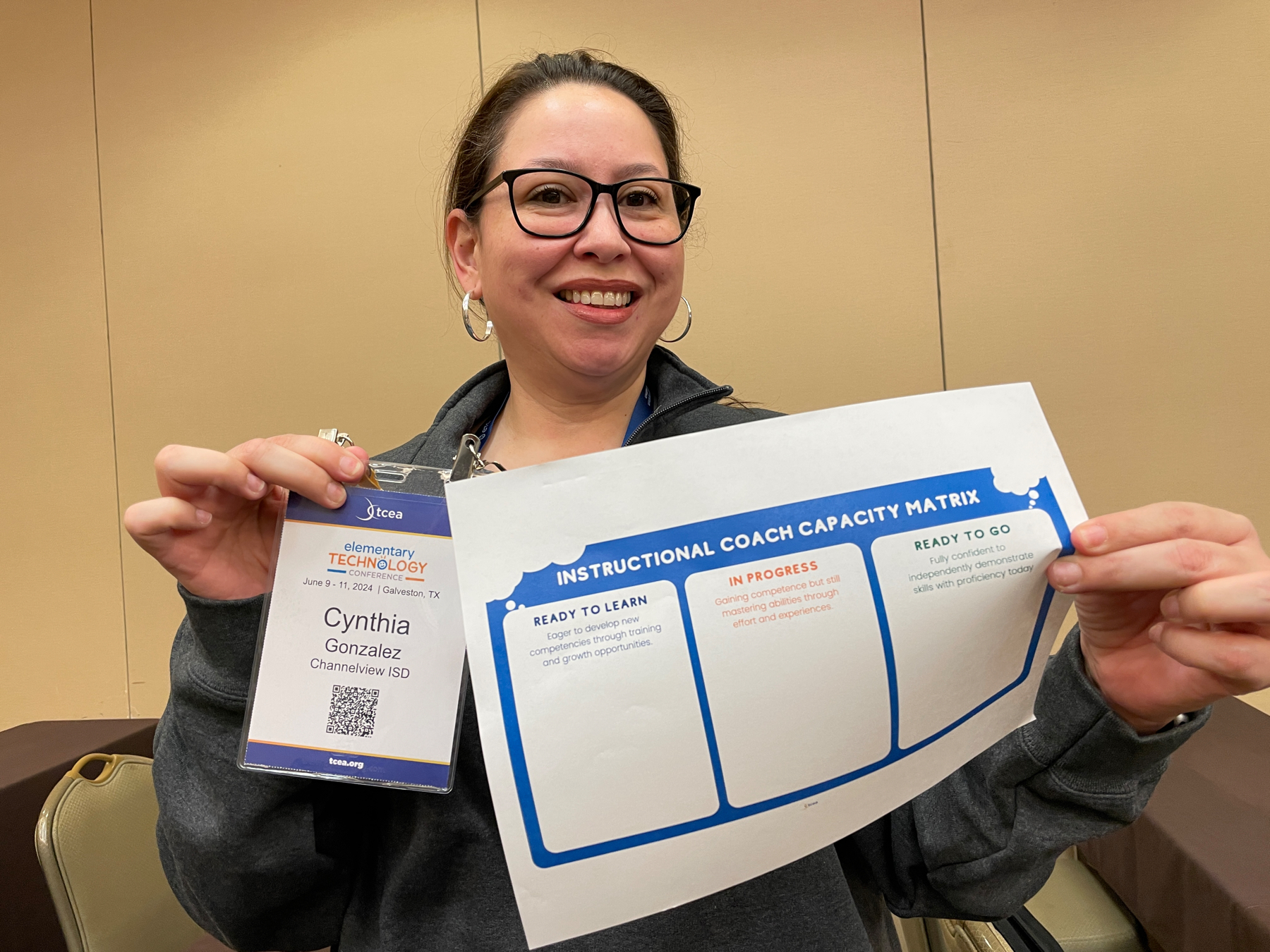
such as Jim Knight’s The Impact Cycle, Diane Sweeney’s Student-Centered Coaching, Elena Aguilar’s Transformational Coaching with Zaretta Hammond’s Culturally Responsive Teaching, and Dr. Katie Alaniz' Collegial Coaching.
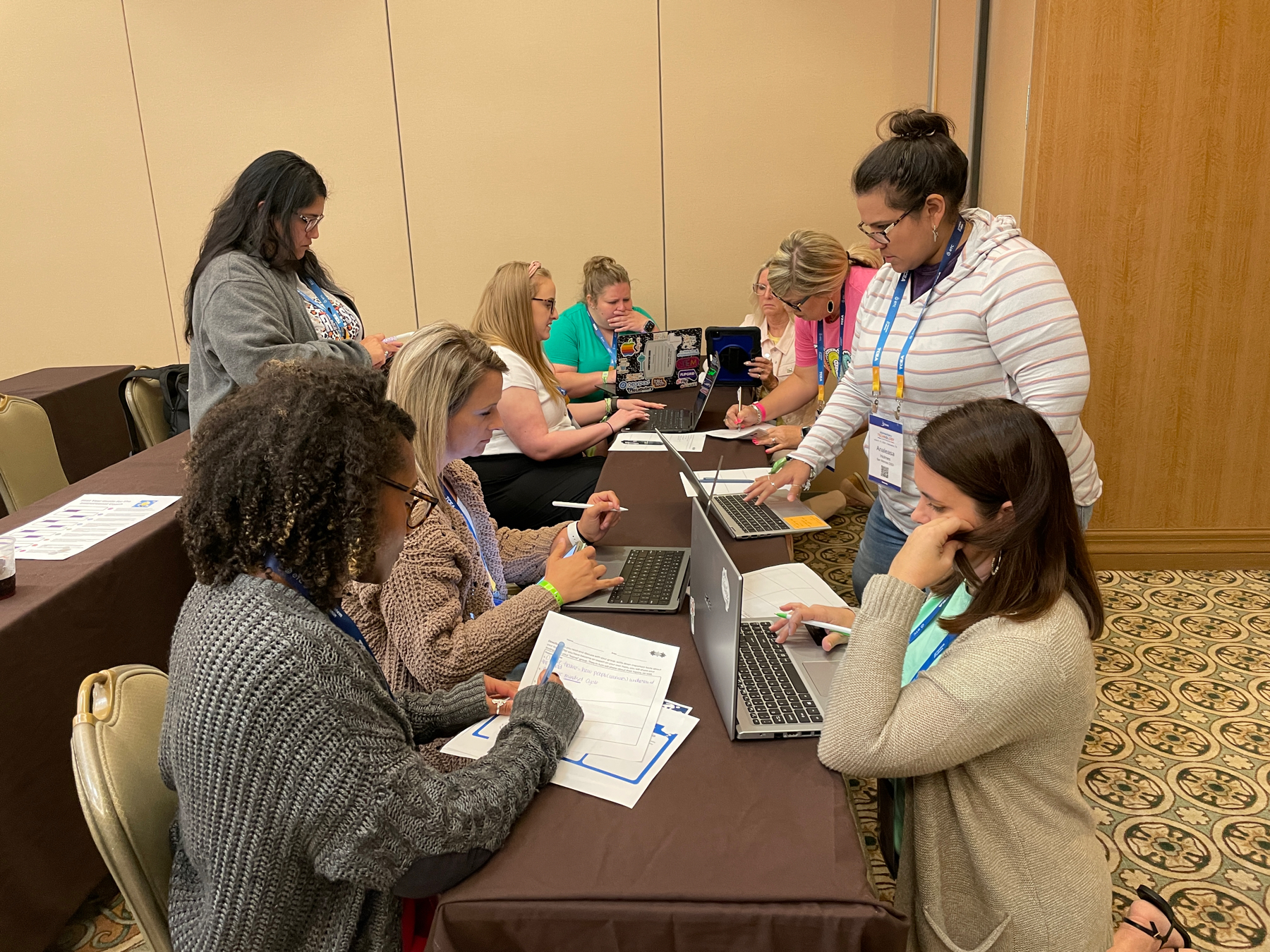
I did change this session up a little from how I had done it before, including the nine elements of instructional coaching, capacity matrix for reflection purposes. What’s more, I was happy to announce a new instructional coaching certification available through TCEA (comes out later this summer).
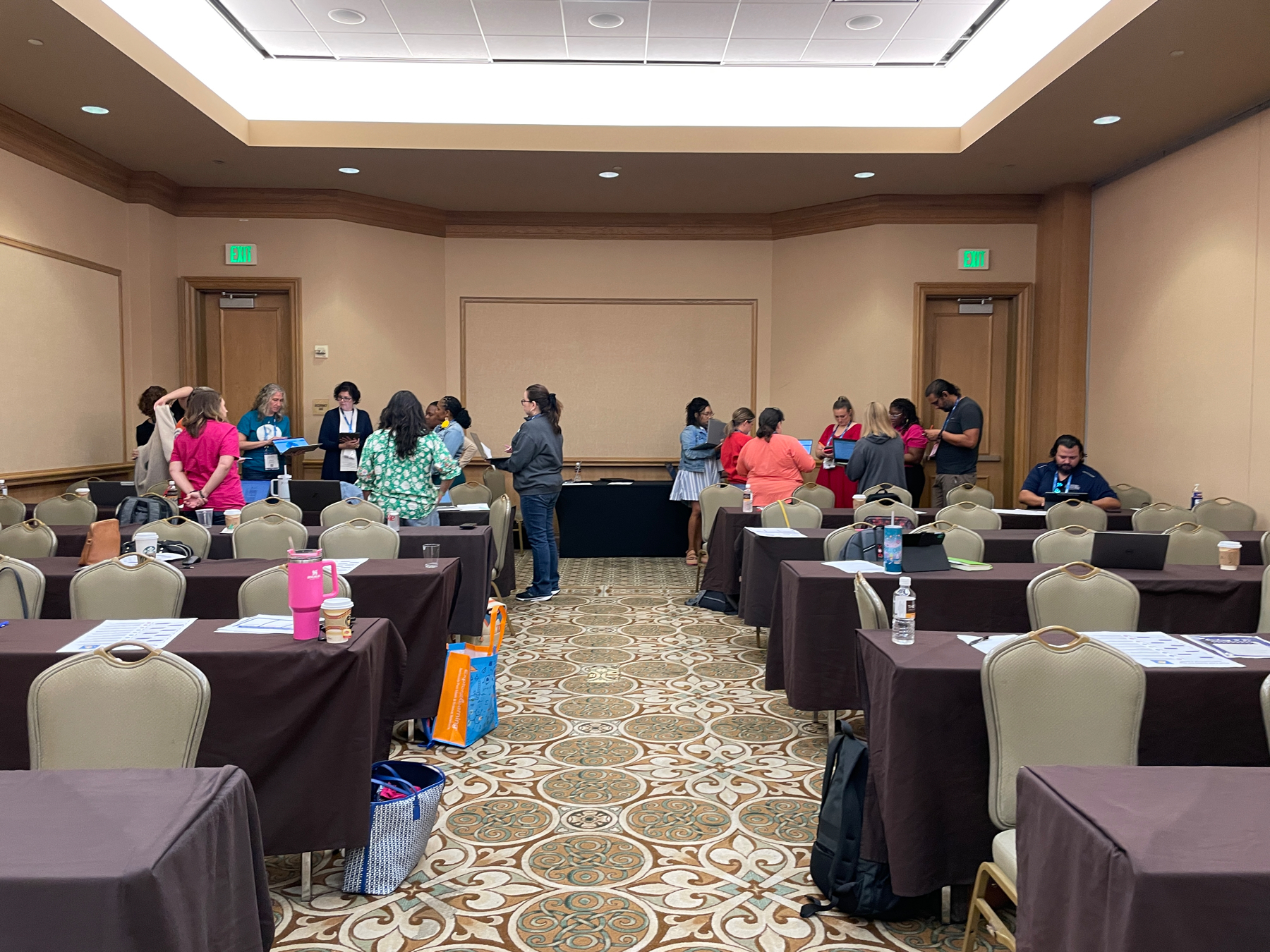
My only disappointment? Jigsaw takes so much time, and while it consumes time nicely during a 90-minute session, it drives me crazy as I circle around listening in on group conversations.
Creating Classroom eBooks
While I didn’t snag any pictures of this session, you can check out the Padlet reflecting some of the ebook planning. Given the short time, how long people met in groups to share ideas, and my slide deck pontificating

Birds of a Feather: Special Education
This was quite the active conversation, with wonderful solutions being suggested that replaced how some were collecting data via Google Forms (the replacement was AbleSpace). However, I was thrilled to use Perplexity AI to figure out or discover a solution to a problem an educator had on how to prepare files for import.

While CSV is easy for many (I can’t count how many times I’ve done this), the Special Education specialist I was chatting with had never done it. I made sure she left with a solution, including a link to Perplexity Pages that walked her through formatting a CSV in Google Sheets, then exporting it to CSV, then importing it into SuccessEd, whatever that is.
You can see the page Perplexity generated based on my queries here.
#TCEA #ETC Monday Sessions: #Coaching for Results and #Classroom #Ebooks #edtech
Coaching for Results is my next TCEA Elementary Technology Conference on Monday. I’m looking forward to facilitating this session, especially since I’ll be making a big announcement at the end of the session. The description for this 90-minute session is:
Discover how various coaching models can enhance classroom learning and seamlessly integrate technology into your teaching strategies!
Here are the activities:

This session is starting now (8:30 AM on Monday).
Classroom eBooks
My second Monday session is Classroom eBooks:
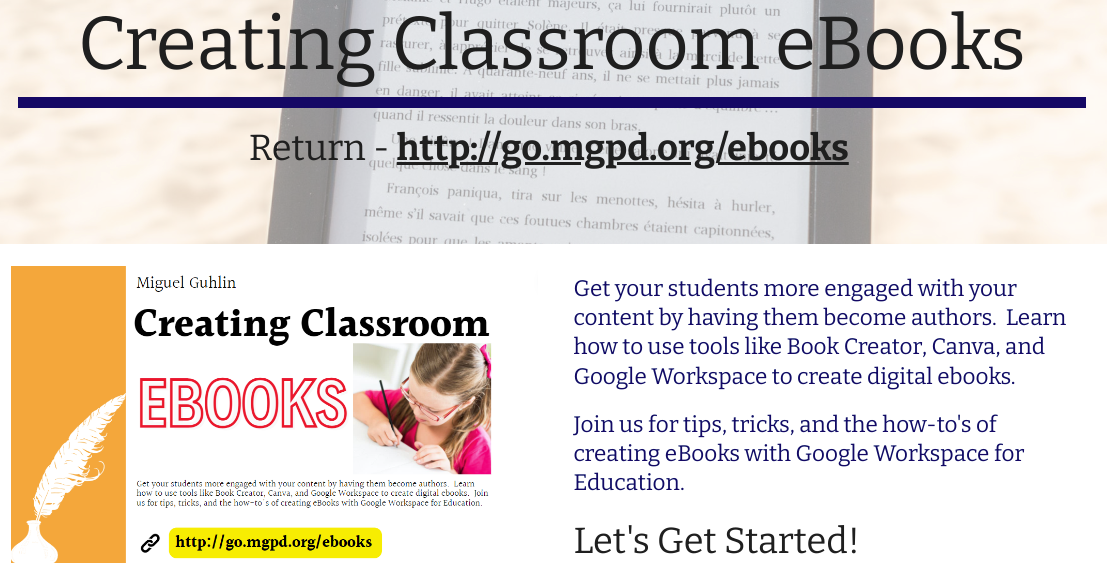
Creating ebooks is so easy to do, but no one has time or curriculum mandate to encourage students creating their own ebooks or books. This session takes place later this afternoon.
Digital and Evidence-Based Strategies - PreConference is Done! #tcea #tceajmg #ETC #EDP
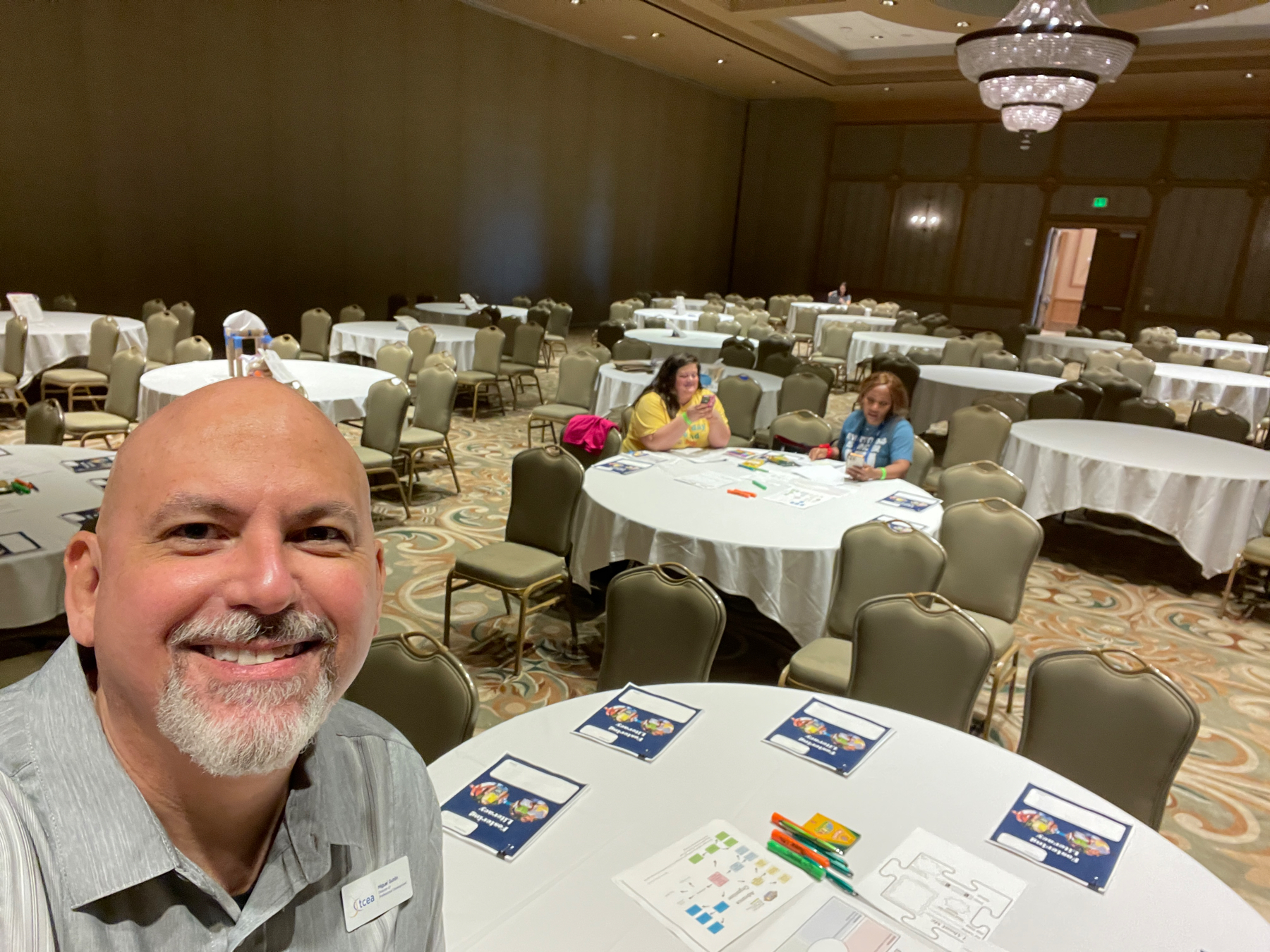
Whew! Another exciting start to the TCEA ETC event. The picture above is one I took right before more folks walked in. These were the eager beavers, and how nice to have them here.
What fun to learn with folks attending my session at TCEA Elementary Technology Conference. This was my three hour preconference event:
🎉📚 Transform your K-12 classroom into a literacy wonderland with “Digital and Evidence-Based Strategies to Enhance PreK-5 Literacy!" 🌈✨ Discover the secrets of reciprocal teaching and Story Bins, powerful strategies that ignite a love for reading and writing. 💪📖 🌟 You’ll find evidence-based tools and strategies for every learning style.
Big Picture Advanced Organizer
My advance organizer for participants to get the big picture….
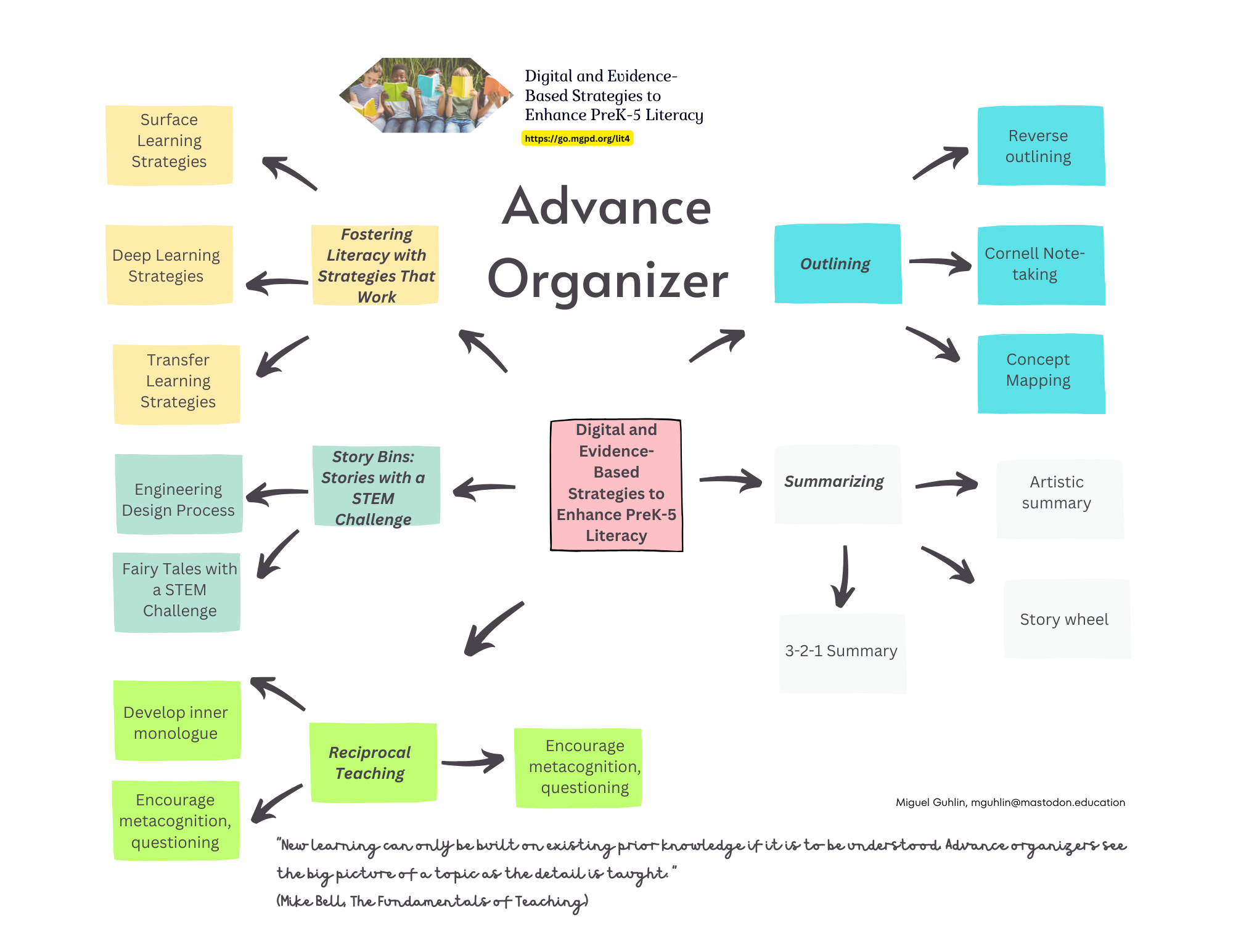
Here’s a quick overview with pictures. Links to resources appear below as well.
Introductions
The session started out with All About Me, and Frayer your Classmate activity (I swiped it from EduProtocols):
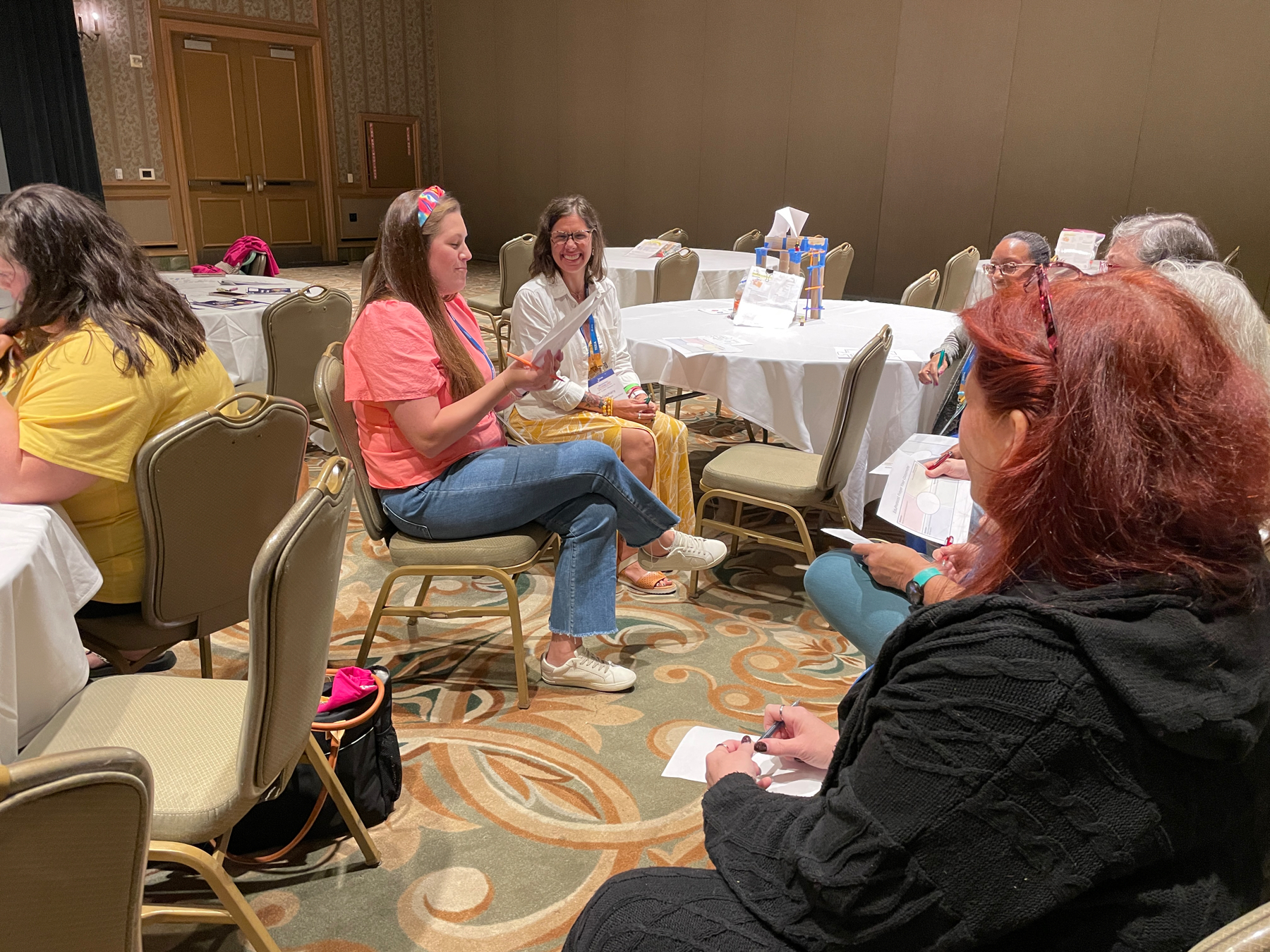
After that, we jumped into the first activity, which was a review of Surface, Deep, and Transfer Learning via the Jigsaw Approach.
The Jigsaw Approach
I love using the Jigsaw Approach, which is kinda funny since I didn’t learn how to REALLY use it correctly until 2019. Since then, I’ve modified my jigsaw organizer to also cover Cornell Notes and 3-2-1 (Facts, Quotes, Question), which you can see below:
Page 1
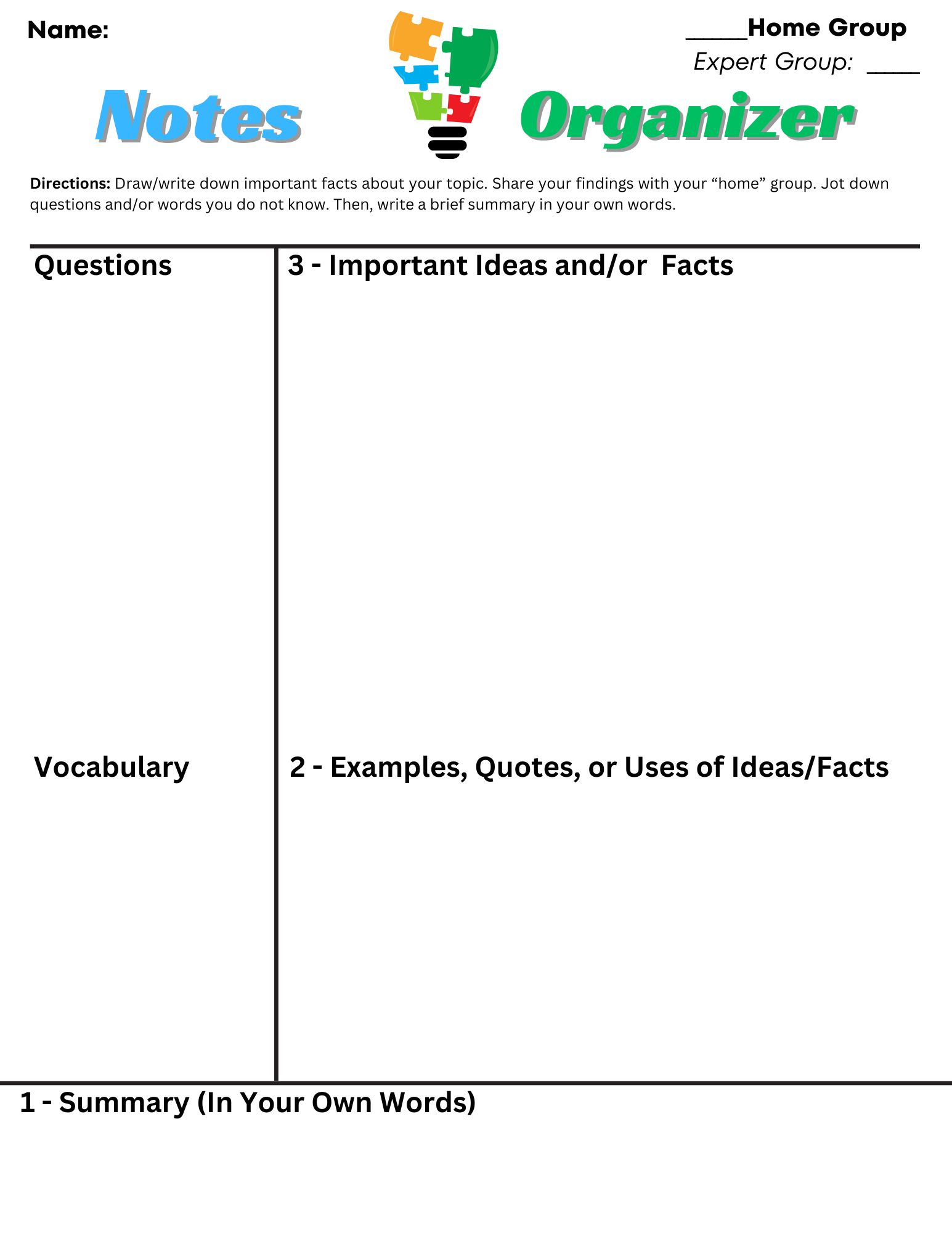
Page 2
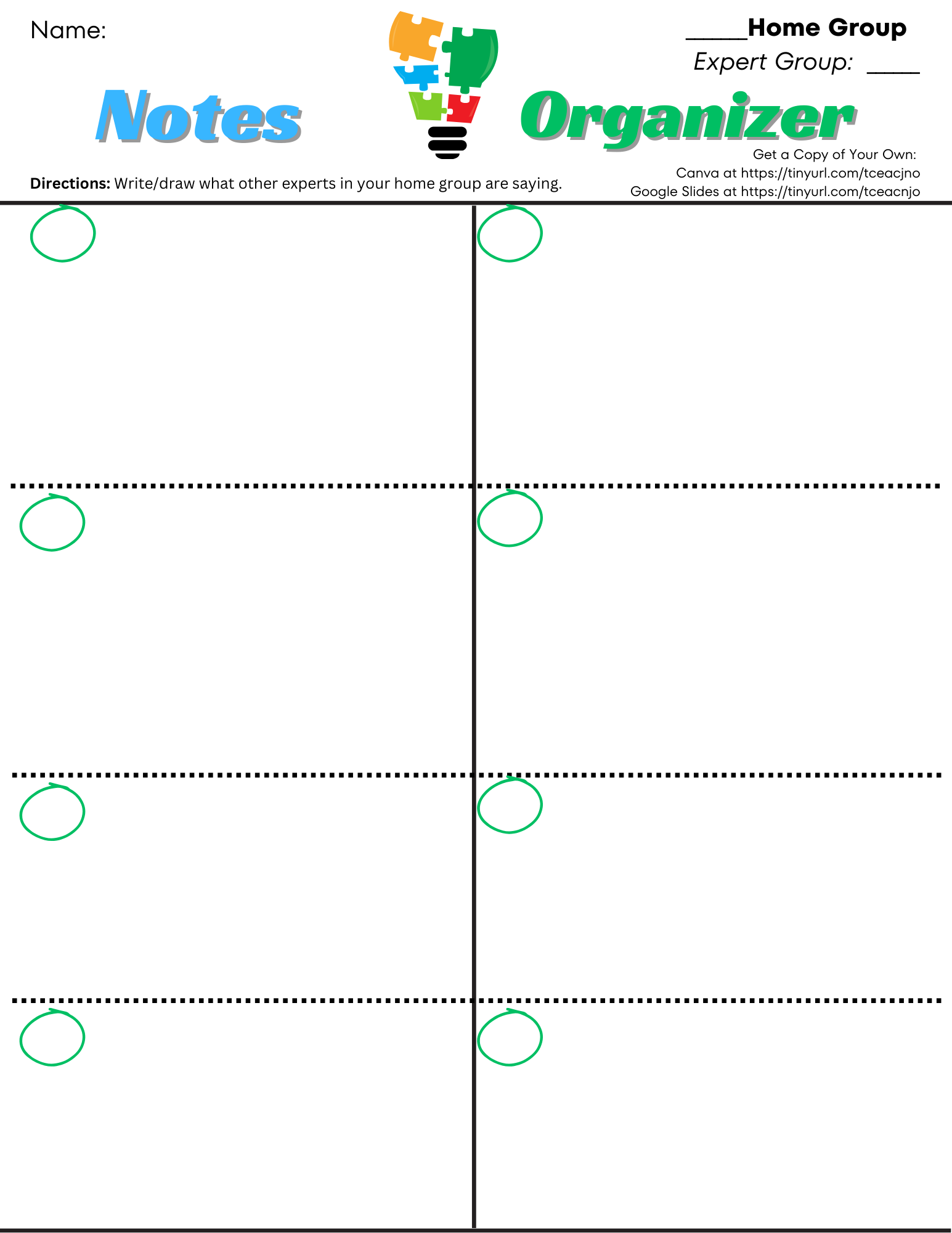
What I love about the jigsaw method is that people become experts in the area they are studying, and this high-effect size instructional strategy is a great one to model. That said, I could tell several folks in my session already were experts in surface, deep, and transfer learning, and/or how to use the jigsaw method.
A Special Share from Lynsy Curry (Humble ISD)
Lynsy was kind enough to share this picture of students gauge and report on their understanding throughout the day; I include it below with her permission:
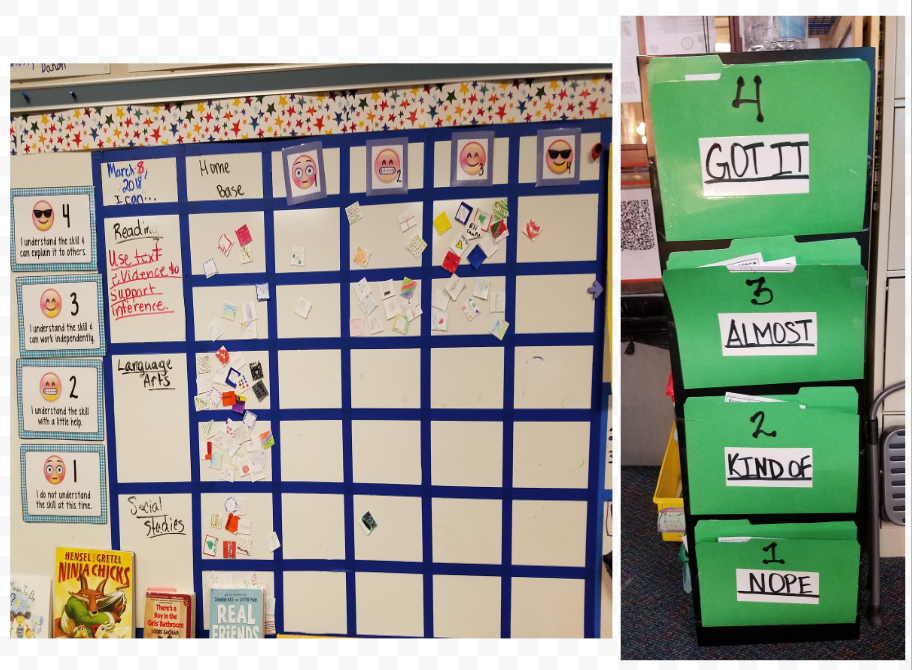
What a great share! Lynsy shares how she uses this:
Here is the picture of how I use my self-assessment throughout the lessons each day. I put the TEKS/I Can statements on my board each morning, then students will move their magnets with their names to how they are feeling about their own level of understanding at the beginning of the lesson, and then they are free to move them throughout the lessons as their level of understanding changes. I focus on the 1s and 2s more and use the 3s and 4s to peer tutor/help.
The green folders are for when I use exit tickets to match their personal confidence in the topic/concept and their actual knowledge. I’m pretty sure I took this from someone else, but I don’t remember who because I’ve been doing this for years! I did not make this up.
Thanks, Lynsy!
Whole Brain Strategy
Another person shared an approach, “Whole Brain," for use with younger students. I had never heard of this approach, and was intrigued.
Story Bins
After the first 90 minutes spent on that activity, we jumped into the Story Bins. You can find all my resources for this online. This was the heart of the pre-conference session I facilitated, and it’s based on a TCEA blog entry I wrote earlier this summer. I am grateful to Jessica H., Peggy Reimers, and Diana Benner for their support in getting this session prepped!
Participant Action Photos
Here are some photos of participants and the solutions they developed:
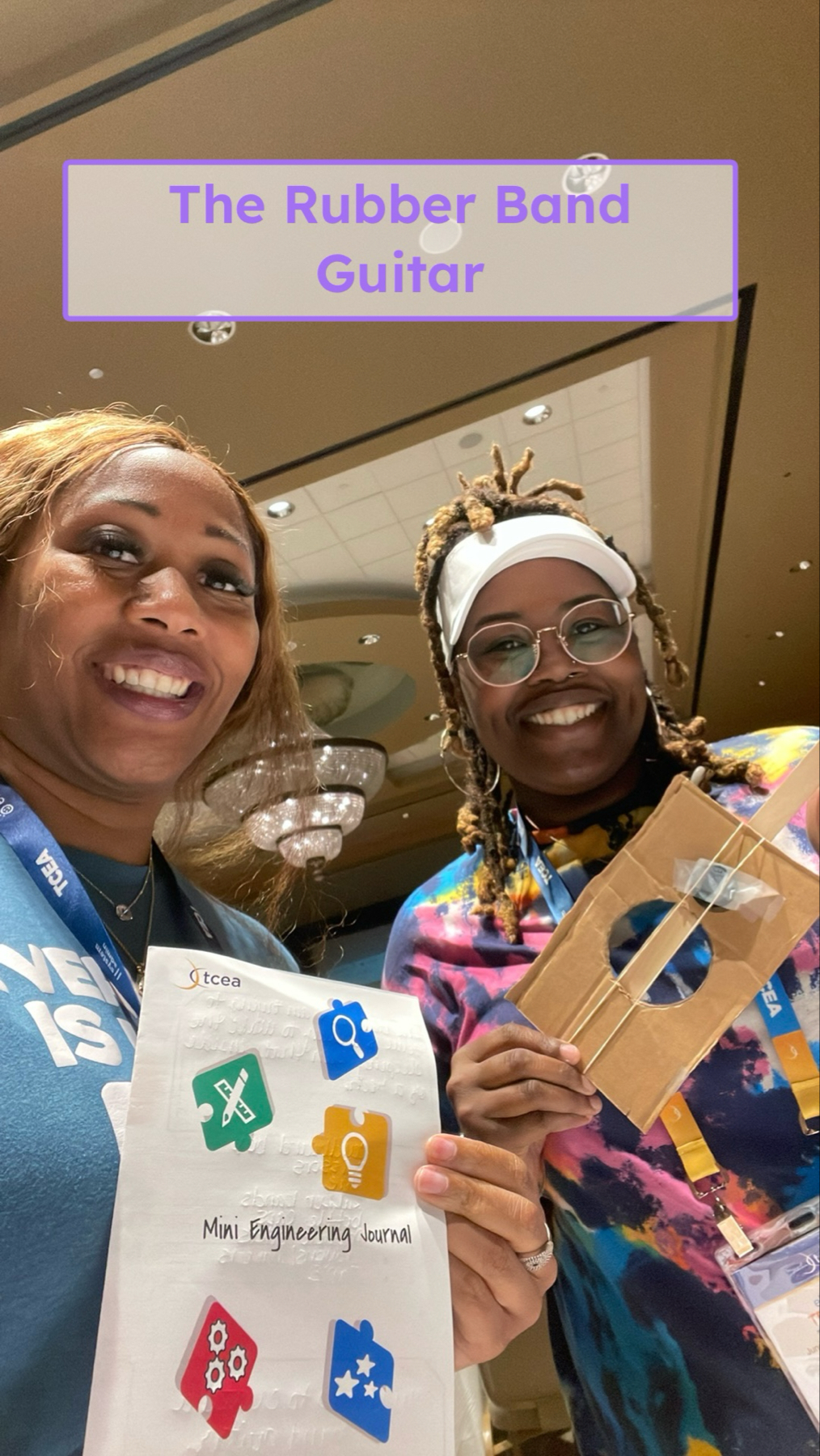
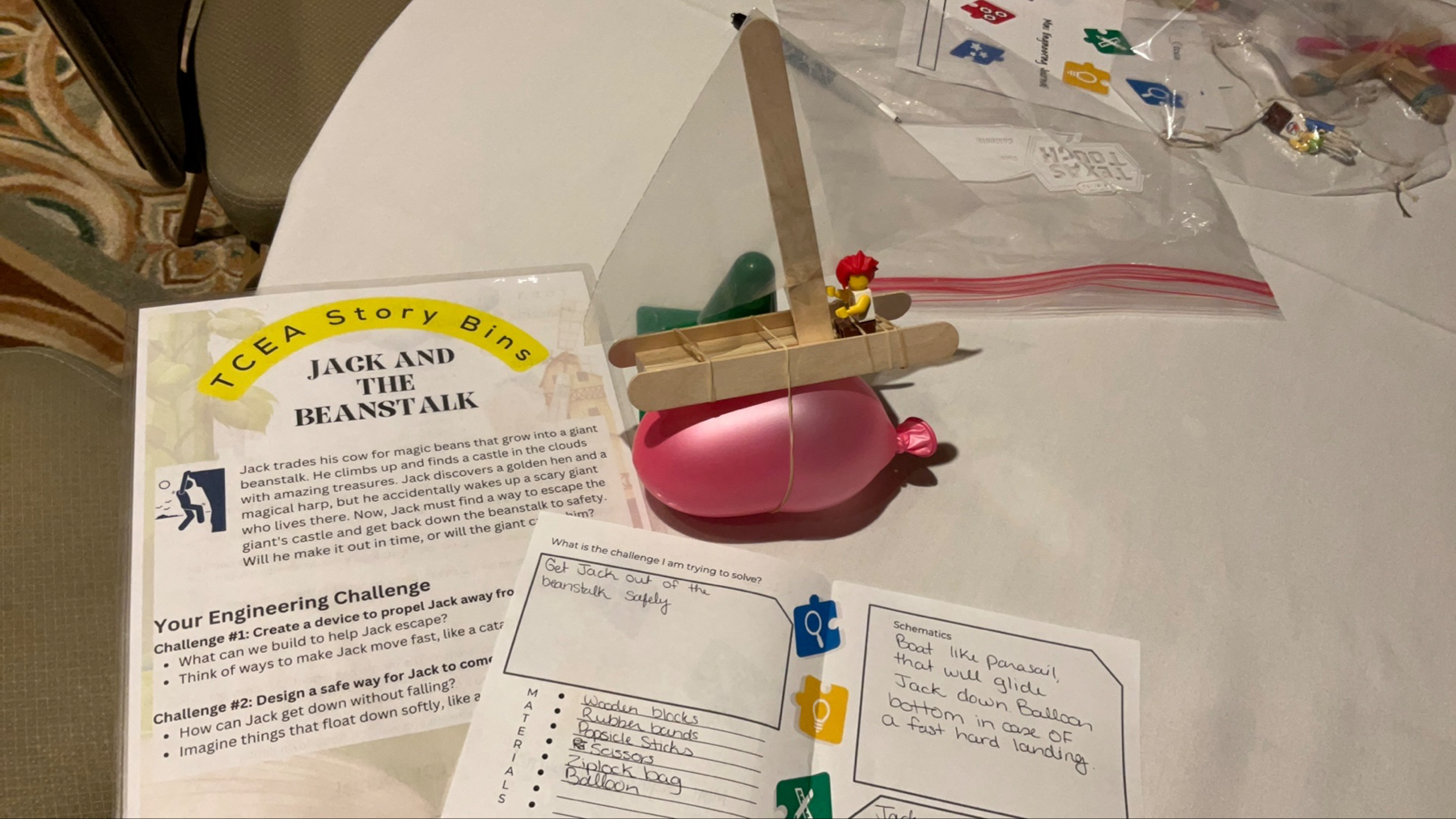
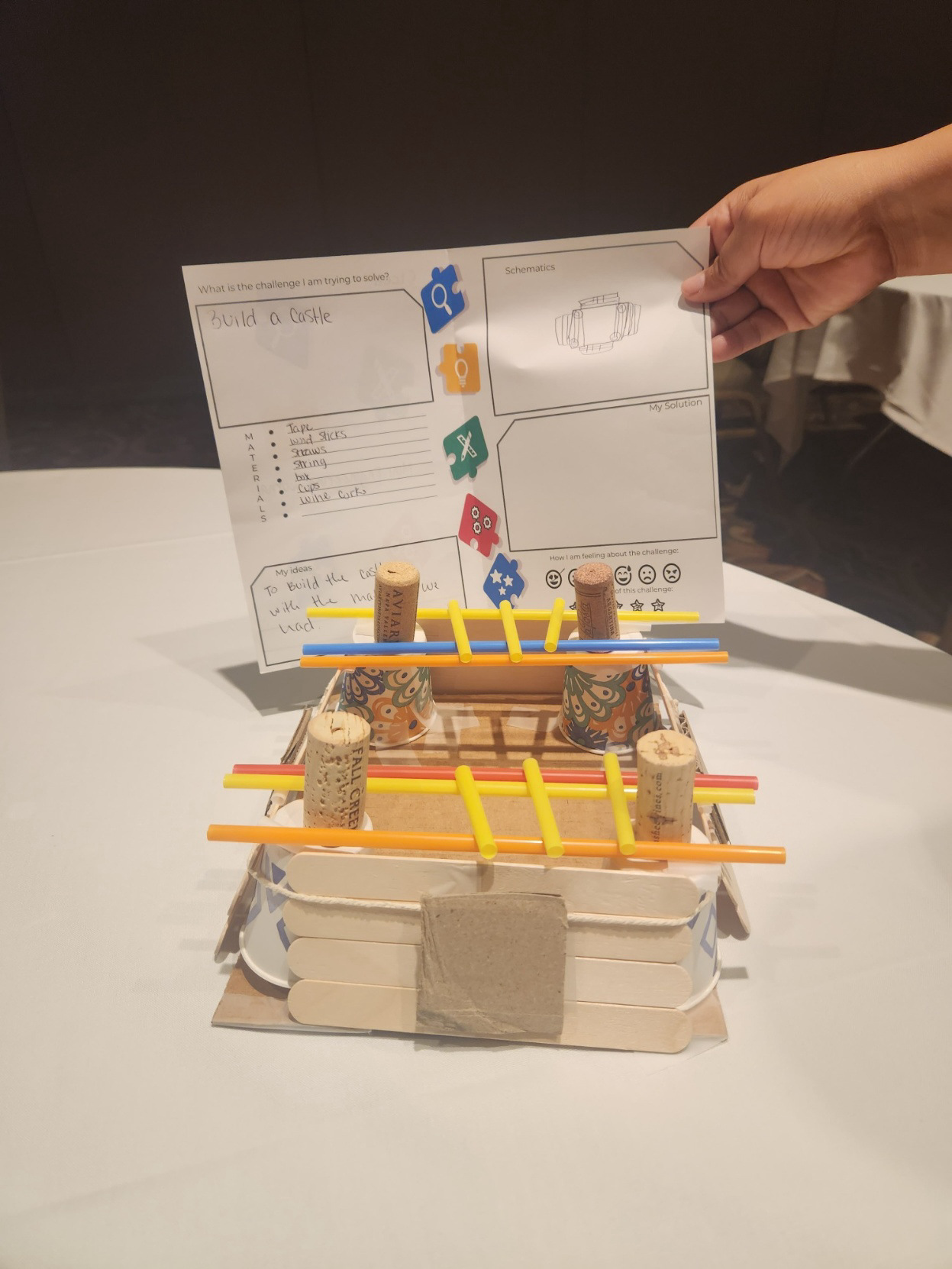
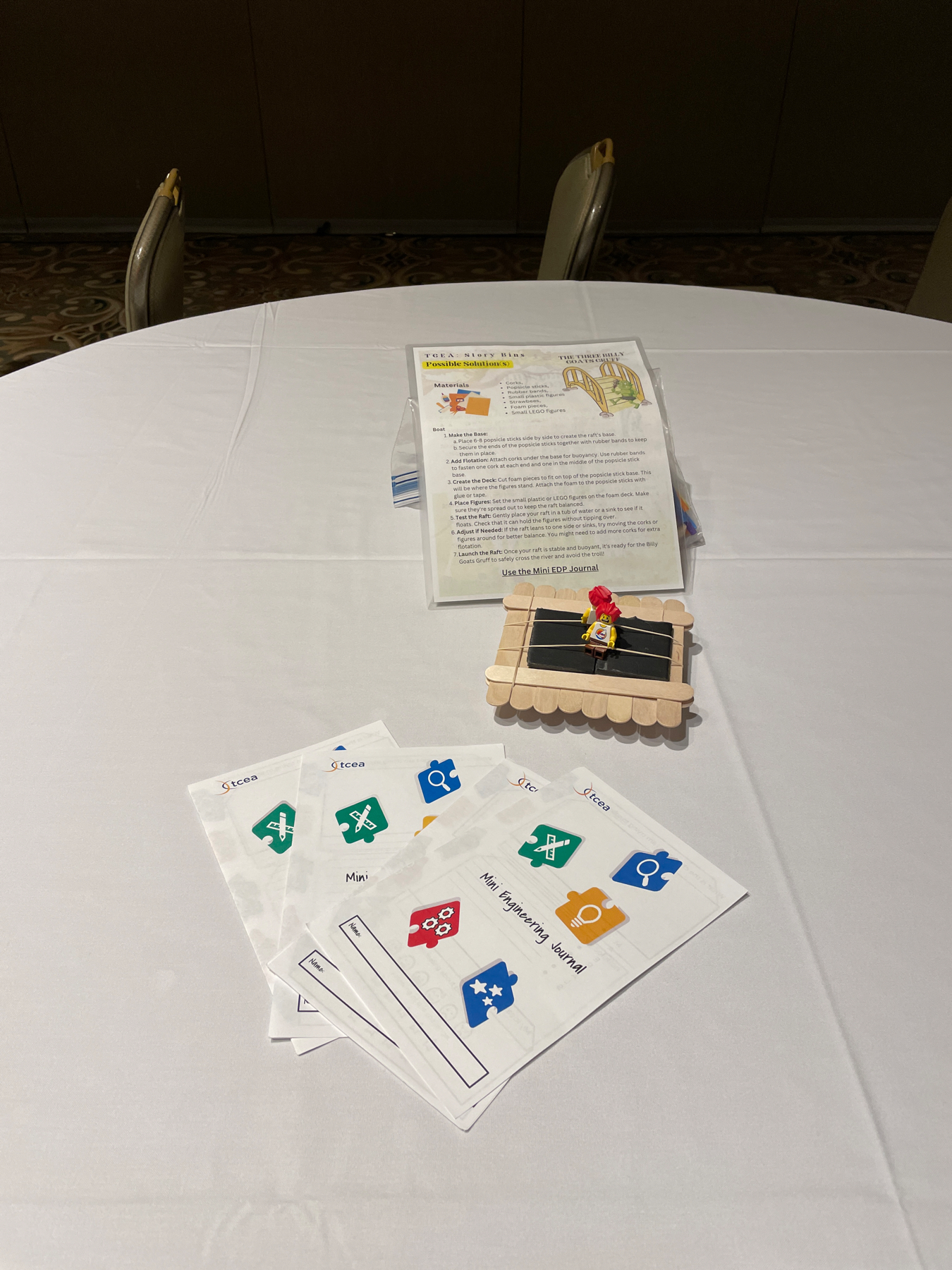
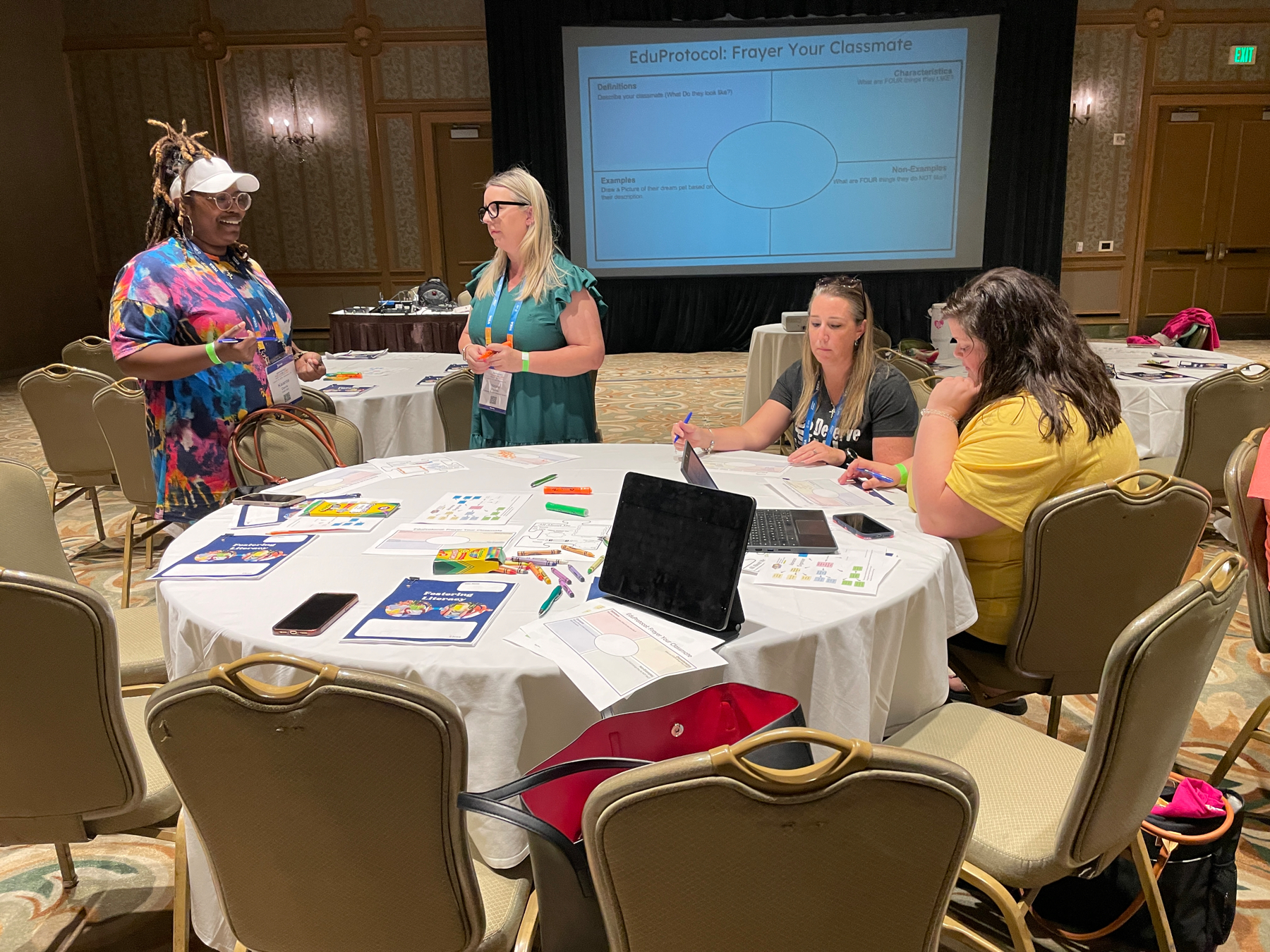
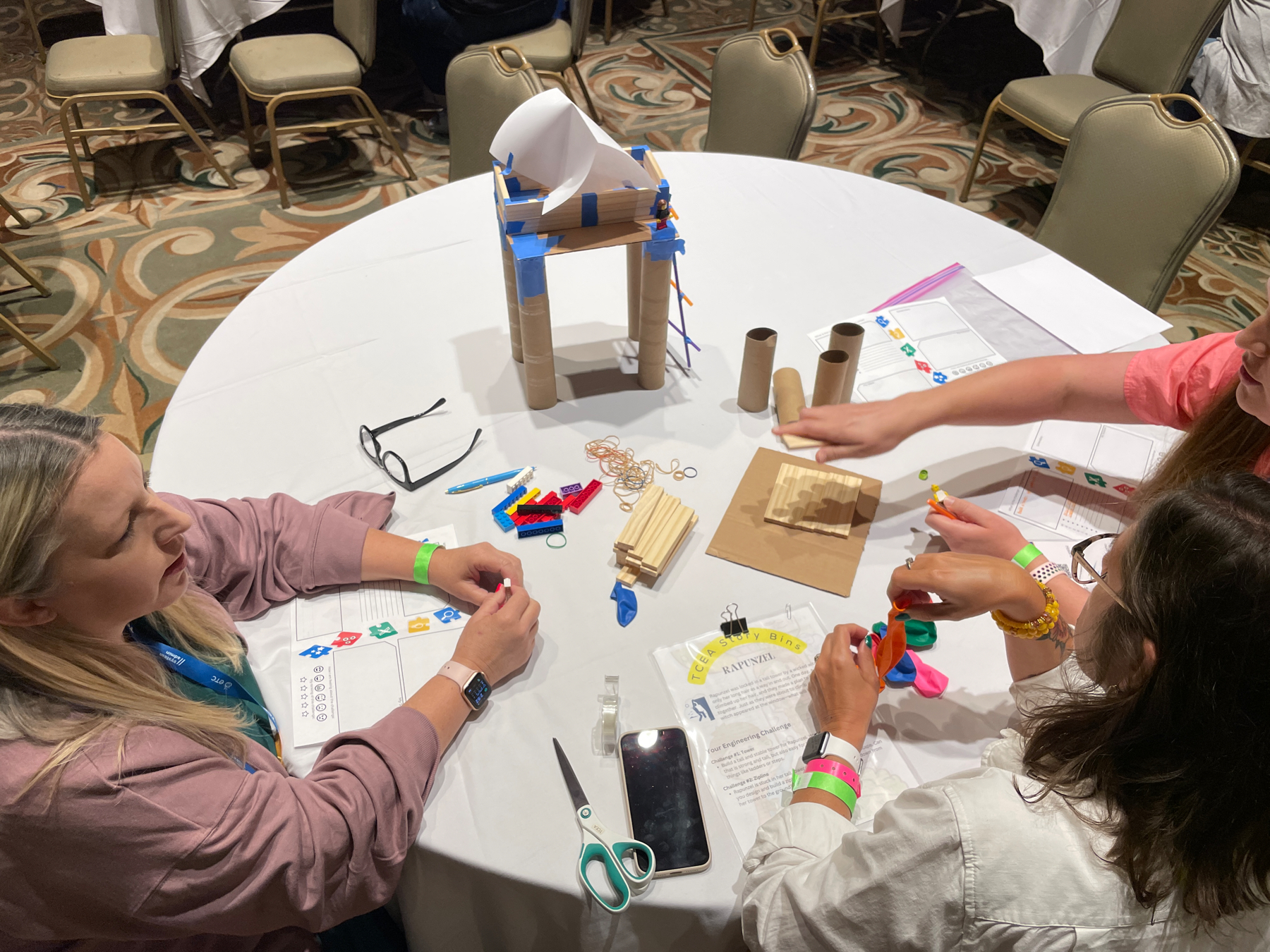
They used the Engineering Design Process (EDP) to plan out projects, then develop them.
Reciprocal Teaching
This portion of the workshop was cut short, or compressed, into 33 minutes or so. You can find all my resources online. I’ll be facilitating this session in its own time slot on Tuesday.
From Google Docs to Audio Book #tcea #tceajmg
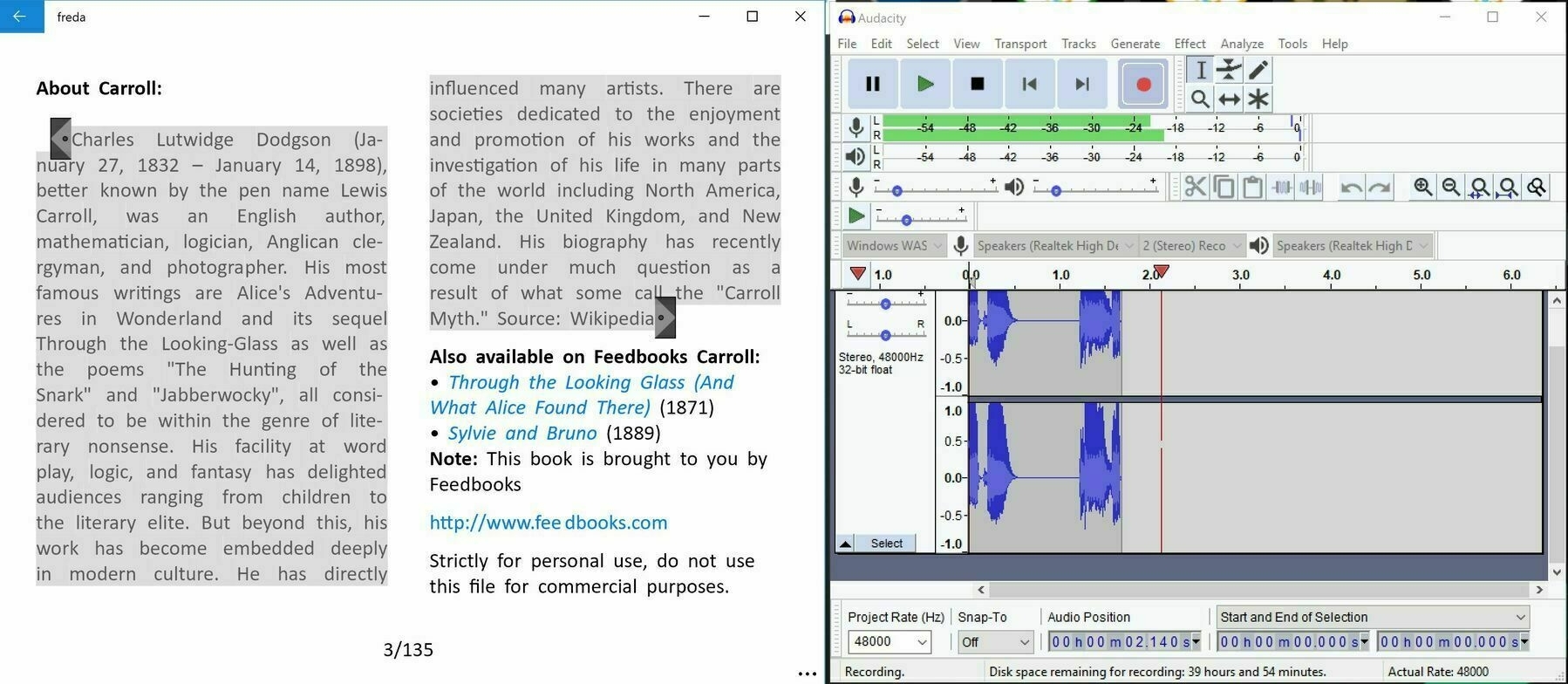
Ever wish you could turn student-created ePub files into narrated audio books? Or make any ePub into an audio book? You can on your Windows computer, by taking advantage of the Freda ebook’s built-in audio reader. Before we go through the process, let’s take a moment to revisit how you can create an ePub-formatted ebook for free.
Read more
Six Websites on Cells for Fun Science Learning #tcea #tceajmg

Teaching middle school science and looking for interactive resources about plant and/or animal cells? Explore these free websites. Ready to explore cells? This blog shows great websites that make science learning fun and simple and are perfect for classroom or home. And they’re all free to use! You already know these websites below will provide students with engaging, interactive activities. But don’t forget how much fun (and messy) creating their own 3D models can be. Have students build 3D models of plant and animals cells using materials like clay, candy, jello, etc. to represent different organelles. Of course, you can also use virtual world building apps like Minetest (free) or Microsoft’s Minecraft (paid).
Read more
Exploring the Feynman Technique #tceajmg #tcea
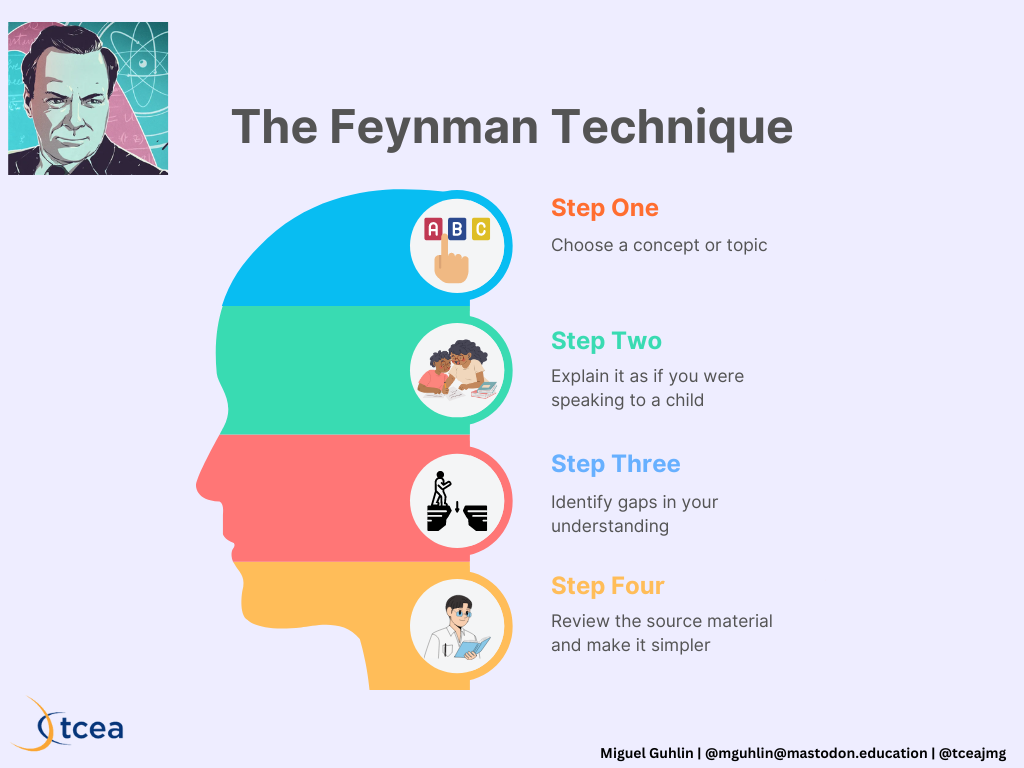
At the Elementary Technology Conference later today, I’ll be facilitating a session on Digital and Evidence-Based Strategies to Enhance PreK-5 Literacy. One of my slides in the over 80 for a 3 hour session, funny enough, is The Feynman Technique. It’s an approach I’ve fallen into by accident during my long years of professional development and teaching, but it’s not one I have followed knowingly or strictly.
It’s worth taking the time to learn it better, and I’ve been reviewing it for future use.
Learn More About It
Here is a short list of resource links explaining The Feynman Technique:
| Title | URL |
|---|---|
| Feynman Technique: FAQs & Explanation | InnovationTraining.org |
| The Feynman Technique: Master the Art of Learning | Farnam Street |
| The Feynman Technique: Study Skills' Secret Weapon | Oxford Learning |
| How I Used the Feynman Technique to Study and Got Better Grades | Study.com |
| The Feynman Technique | Ali Abdaal |
An AI-Generated Example
The Feynman Technique is a powerful method for learning and understanding complex concepts by breaking them down into simpler terms. Here, we’ll use the Feynman Technique to explain the use of Perplexity AI.
Step 1: Choose a Concept
Concept: Perplexity AI
Step 2: Explain the Concept in Simple Terms
Perplexity AI is an AI-powered search engine that helps you find information quickly and accurately. Unlike traditional search engines like Google, which provide a list of links, Perplexity AI gives you direct answers to your questions, along with citations from various sources. It uses advanced language models to understand your queries and provide detailed, relevant responses.
Step 3: Identify Gaps in Your Understanding
To ensure a thorough understanding, let’s break down the key features and uses of Perplexity AI:
Step 4: Simplify and Use Analogies
Simplified Explanation: Imagine you have a very smart assistant who can answer any question you have. Instead of giving you a list of books or articles to read, this assistant reads them for you and tells you exactly what you need to know. This assistant can also understand different types of questions, whether they are about text, pictures, or documents. If you ask a complicated question, the assistant will ask you more questions to make sure it gives you the best answer. You can also keep all the answers organized in a notebook that you can look at anytime.
Final Explanation
Perplexity AI is like having a super-smart assistant that helps you find answers quickly and accurately. It uses advanced technology to understand your questions and gives you direct answers, saving you time and effort. You can ask it about anything, and it will search the web, read the information, and tell you what you need to know. Plus, you can keep all your questions and answers organized in one place for easy access later.
By using the Feynman Technique, we’ve broken down the concept of Perplexity AI into simple, understandable terms, ensuring a deeper understanding of its features and uses.
Prompt Generation
Love this example:
ChatGPT + the Feynman Technique to learn anything via Ruben Hassid:
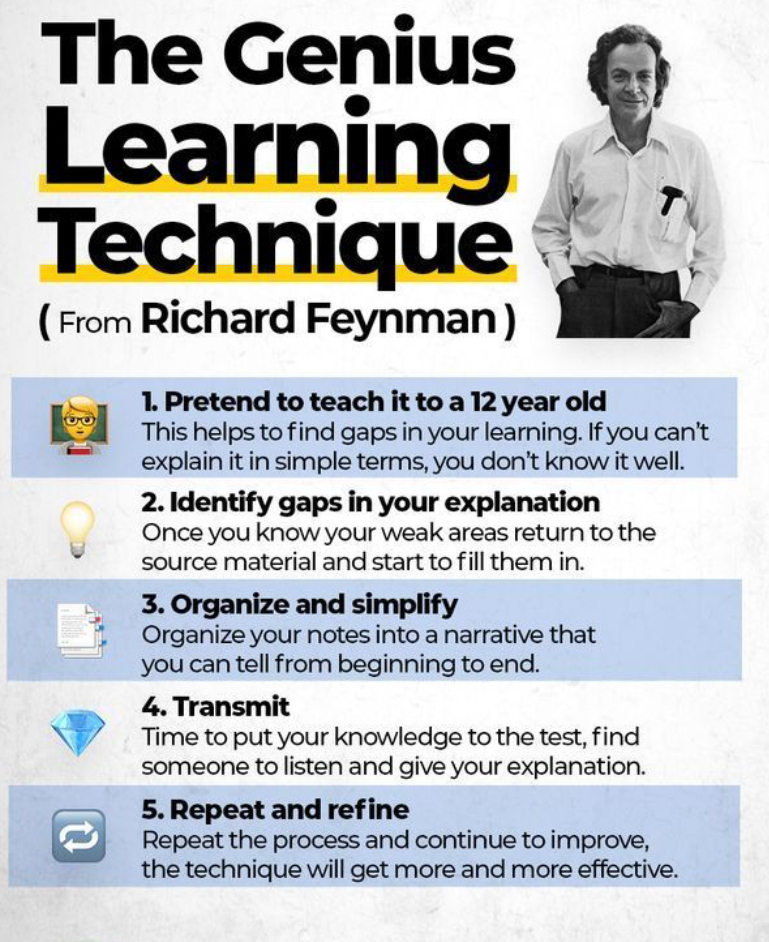
Copy & paste this prompt from rubenhassid.ai
“Act like an expert educator and mentor.
You have been helping students and professionals master complex topics using the Feynman Technique for over 20 years.
You specialize in breaking down intricate subjects into understandable, manageable pieces through iterative learning and teaching.
Objective:
I want to master any topic using the Feynman Technique by following a structured, multi-step process. The goal is to achieve deep understanding through multiple iterations and refinements.
Step-by-Step Process:
Topic Selection and Initial Explanation:
Identify the topic I want to master.
Write a clear, simple explanation of the topic as if teaching it to someone with no prior knowledge. Ensure the explanation is thorough but understandable. Identify Gaps in Understanding:
Review the initial explanation and identify any areas where my understanding is lacking or unclear.
Highlight specific concepts, terms, or sections that need further clarification or research.
Deep Dive into Problem Areas:
Conduct research to fill in the gaps identified. Use reliable sources such as academic papers, textbooks, and expert opinions.
Rewrite the initial explanation, incorporating the new knowledge gained from this research. Ensure the explanation remains clear and straightforward. Simplify and Clarify:
Simplify the refined explanation further. Use analogies, metaphors, and examples to make complex ideas more accessible.
Ensure that the explanation can be understood by someone with no background in the topic.
Teach and Test:
Teach the topic to a friend, family member, or imaginary student. Pay attention to any questions they might have and areas where they seem confused.
Use their feedback to identify any remaining gaps or unclear sections in your explanation.
Iterate and Refine:
Iterate on the explanation based on the feedback received. Continue to simplify and clarify until the explanation is seamless and easily understandable.
Repeat the teaching and feedback process as many times as necessary to achieve a deep and thorough understanding of the topic.
Final Review and Reflection:
Review the final explanation and reflect on the learning process. Summarize the key insights and understandings gained.
Consider how the Feynman Technique helped in mastering the topic and any improvements or adjustments that can be made for future learning endeavors.
Start with “What is the topic you’d like to master?” to know what I want to master. You can’t move on without this step.
Take a deep breath and work on this problem step-by-step.”
This is one of my 53 prompts from my library.
3,346 people have access to it. Forever.
Get your own at rubenhassid.ai
♻️ Repost this image if you learned something.
Image from the one & only Colby Kultgen.
Story Bins: Virtual Edition #tcea #tceajmg
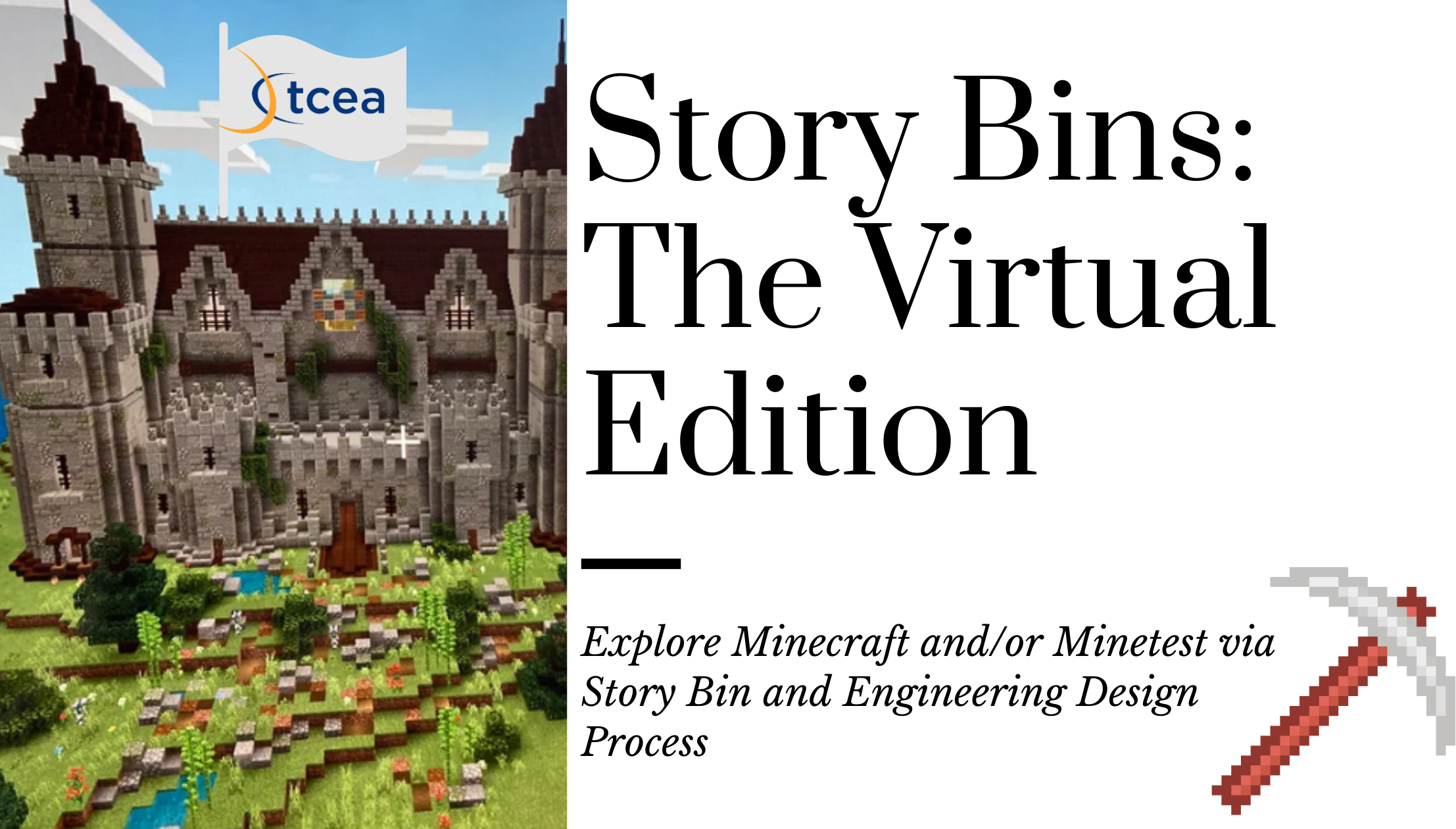
Did you love Story Bins, the reality-based edition? Then, you will certainly like virtual STEM challenges with Minecraft and Minetest.
Online Reading Programs and Digital Apps #tcea #tceajmg
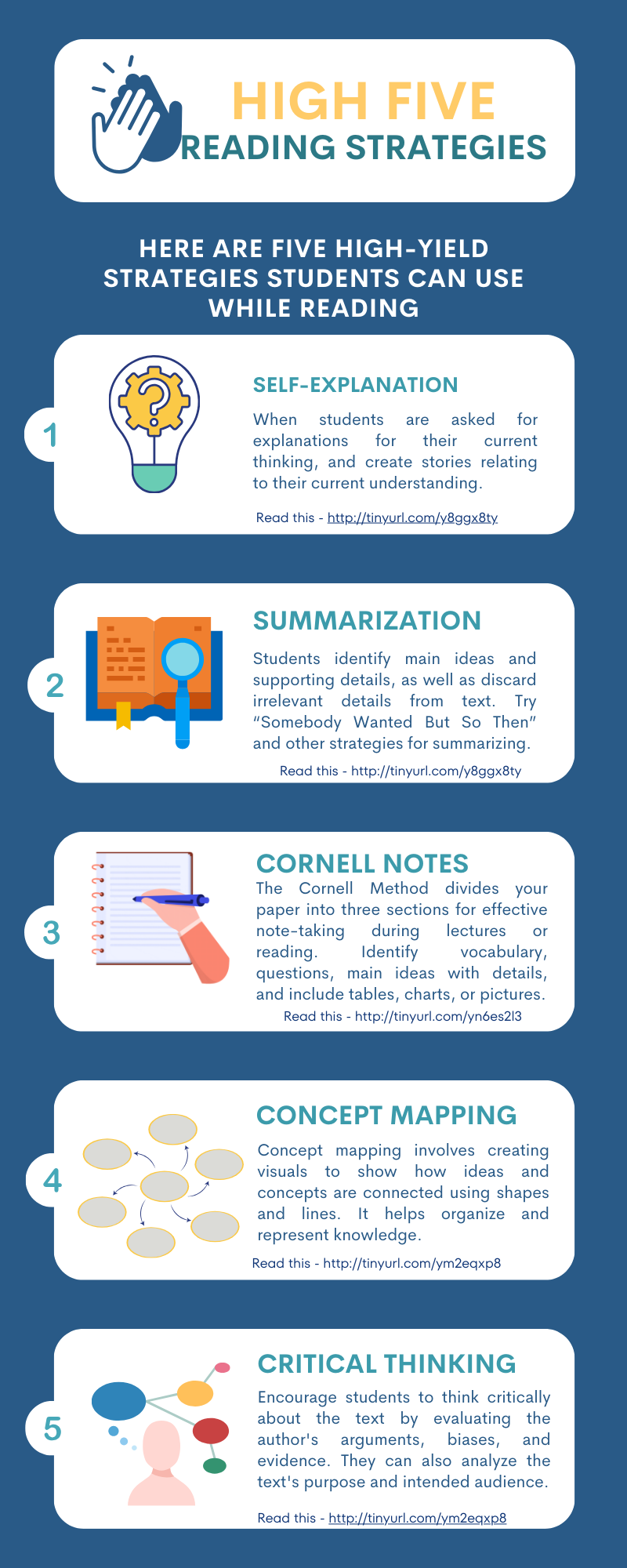
Looking for some ways to supplement your reading interventions? Here are a few AI-recommended solutions with reflections about each one. We’ll explore 21 supplemental online reading programs and a list of 6 iOS apps, including reading titles and content. Ready to dive in?
Read more
Evidence-Based Teaching #tcea #tceajmg
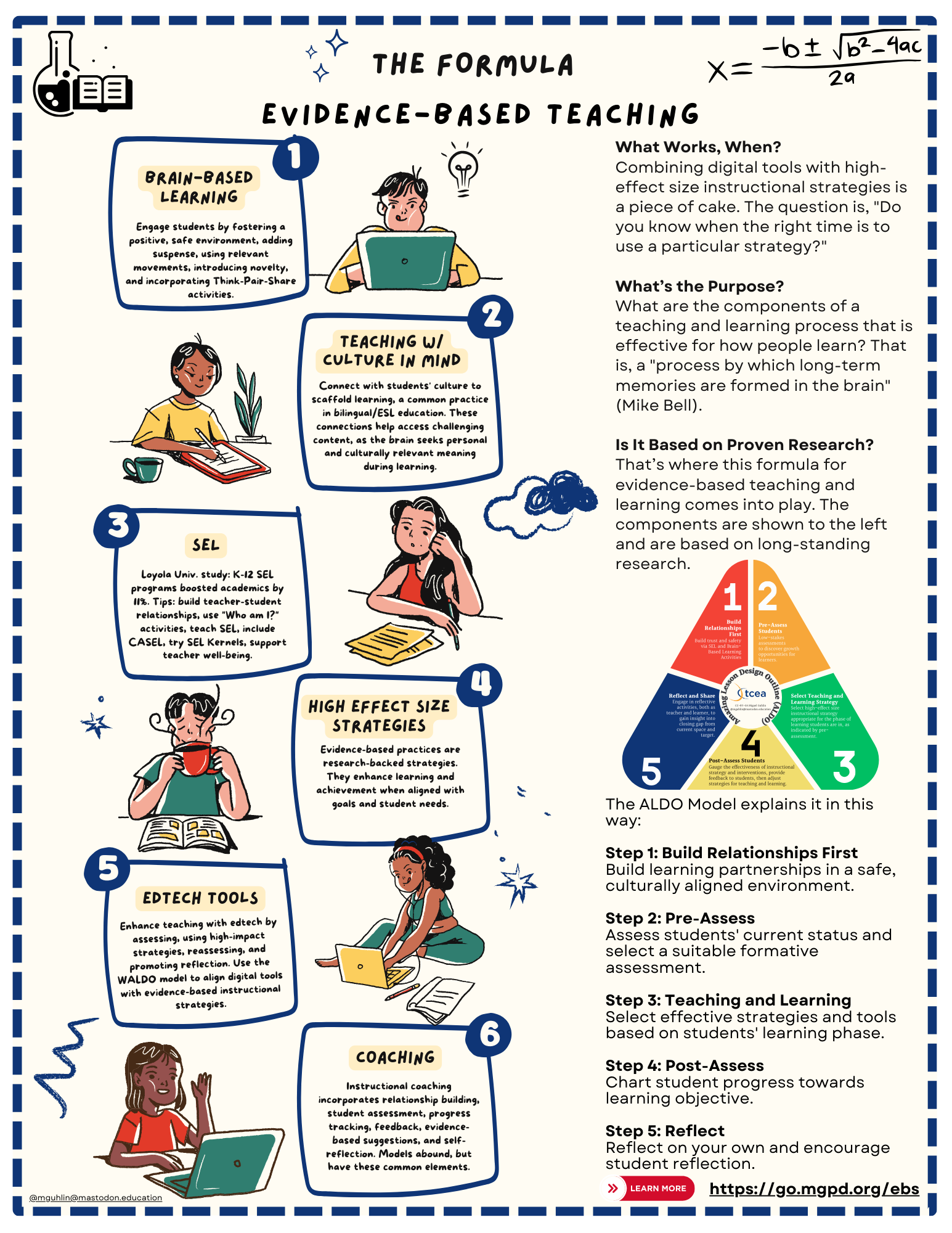
Image created by author.
The Evidence-Based Teaching online, self-paced course offers the opportunity to learn specific, evidence-based strategies you can use in your classroom. It also provides an overall framework for amazing lesson design that is evidence-based.
The purpose of this course is to provide you with the “magic formula” of lesson design that supports your efforts at teaching and learning in the K-12 and adult classroom. In addition to powerful, evidence-based instructional strategies, you will learn how to keep culture in mind when structuring learning opportunities.
The SOLO Taxonomy #tcea #tceajmg

Infographic created by author in Canva.
A taxonomy of learning can be helpful. It can provide a schema for understanding learning we participate in or facilitate for others. The SOLO Taxonomy has been around since I graduated from eighth grade. In spite of that, I never learned about John Biggs and Kevin Collis’ creation in 1982. It needs little introduction since heavyweights like Peter DeWitt and Pam Hook have spent some time explaining it. Yet, as I mentioned, it’s important to build one’s own theory of understanding. To do so, I have juxtaposed various explanations. These explanations are organized in a simple table.